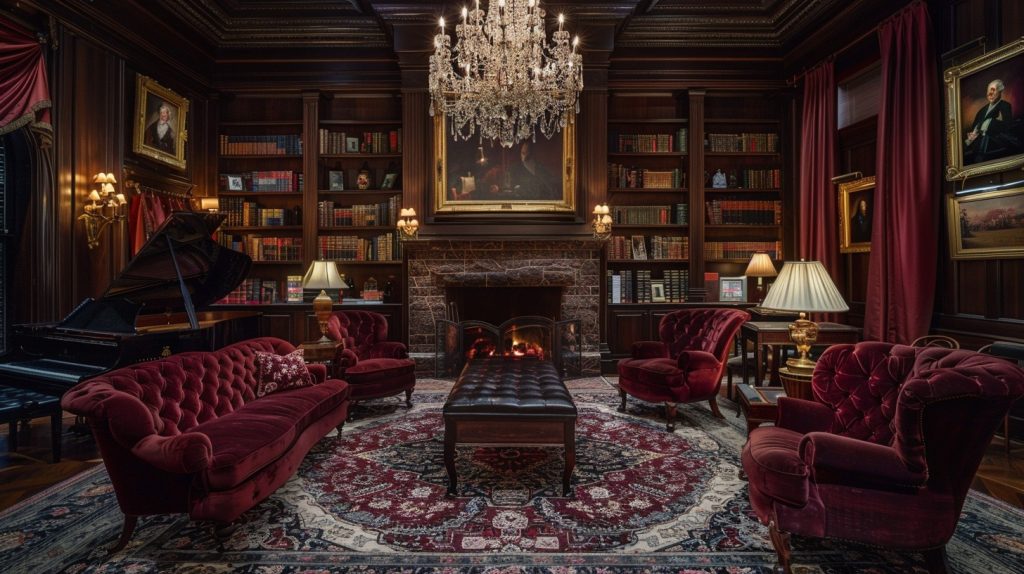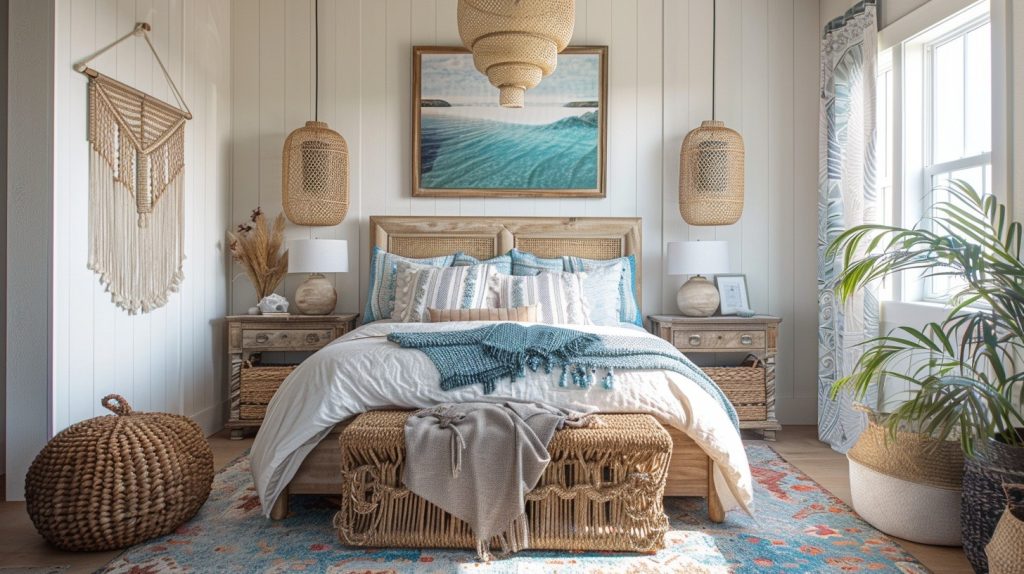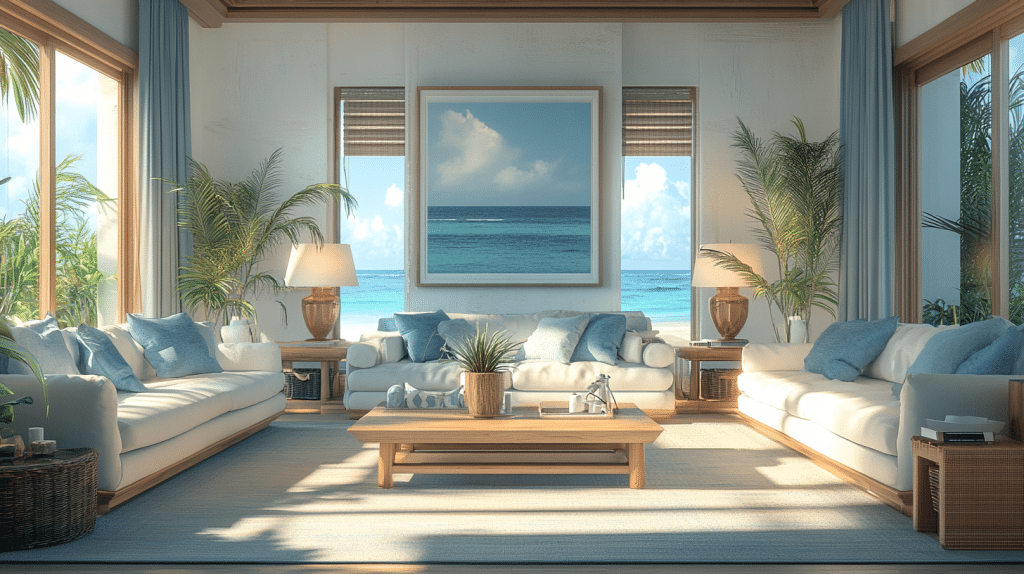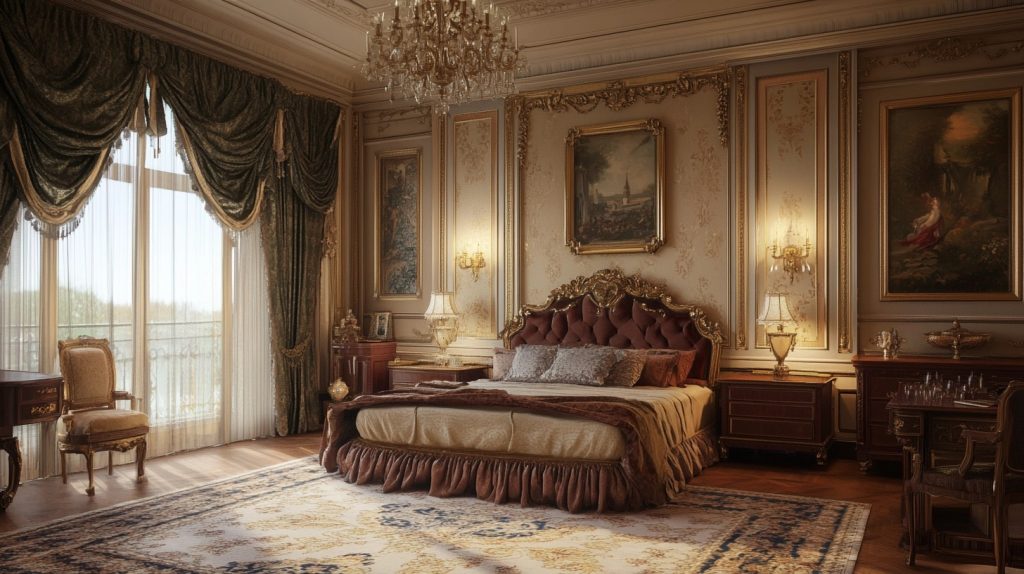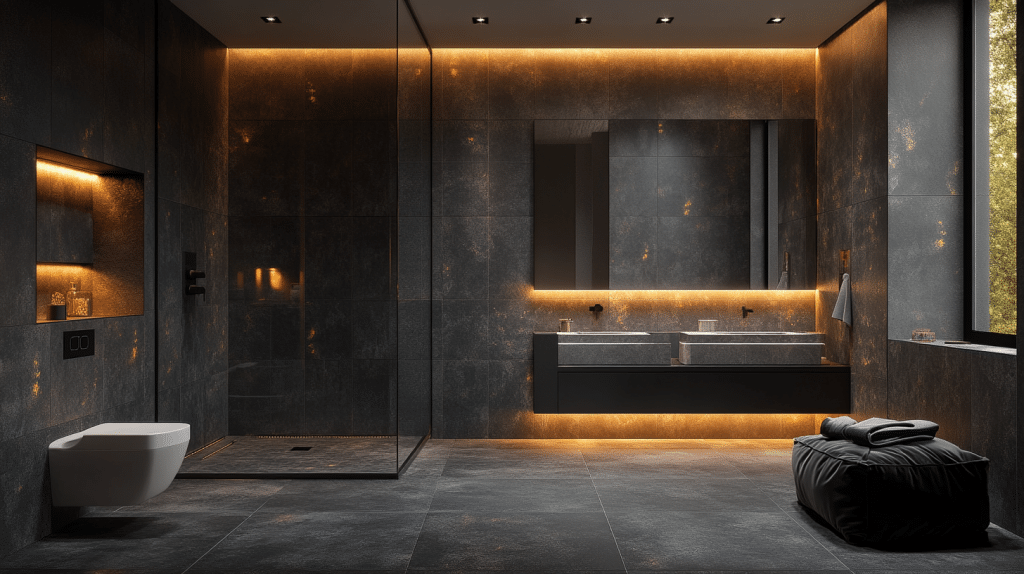Neoclassical interior design is a timeless aesthetic that celebrates elegance, symmetry, and historical grandeur. Drawing inspiration from classical Greek and Roman architecture, this design style transforms living spaces into sophisticated, opulent environments that exude refinement and luxury. From grand marble entryways to intricately detailed ceiling frescoes, neoclassical interiors blend architectural elements, rich textures, and a carefully curated color palette to create spaces that are both visually stunning and deeply rooted in cultural heritage. This comprehensive guide explores 29 exceptional design features that capture the essence of neoclassical interior design, offering inspiration for those seeking to infuse their homes with timeless elegance and classical beauty.
1. Grand Marble Entryways

Grand marble entryways are a hallmark of neoclassical interior design, exuding opulence and timeless elegance. The natural veining and luster of marble create a striking first impression that is both luxurious and welcoming. Paired with classical columns and gilded mirrors, the space becomes a majestic prelude to the rest of the home. Soft lighting highlights the reflective surfaces, enhancing the grandeur.
2. Opulent Gold Trim Living Rooms
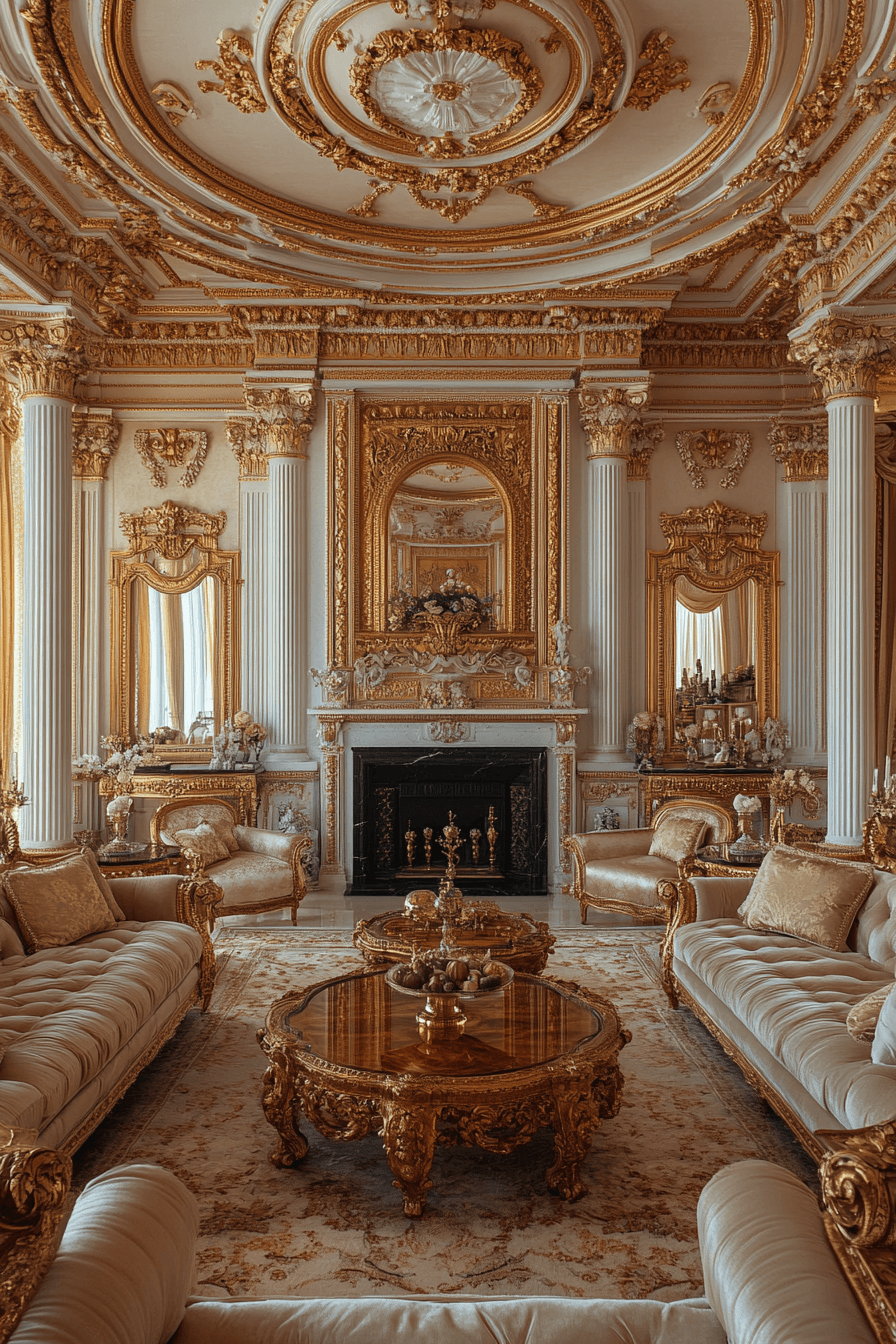
In neoclassical interior design, opulent gold trim adds a touch of royalty to living rooms. This design element frames doorways, embellishes ceilings, and highlights the intricate craftsmanship of furniture. The reflective quality of gold enhances the light in the room, creating a warm and inviting atmosphere. Velvet upholstery and silk curtains complement the richness of the gold, adding depth and texture.
3. Elegant White Columned Hallways
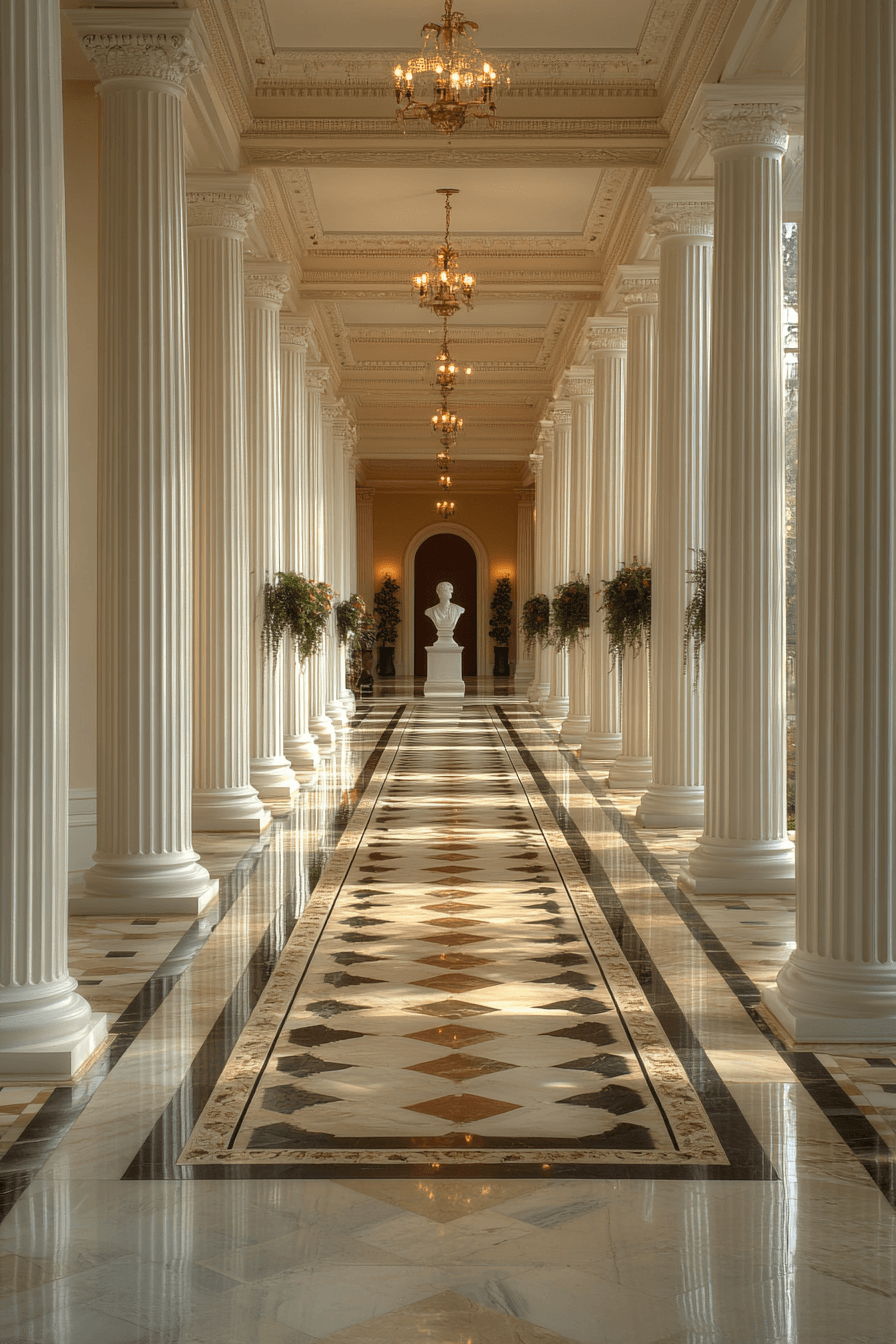
Elegant white columned hallways are a signature feature in neoclassical interior design, evoking the grandeur of ancient Greek and Roman architecture. These columns add structural beauty and a sense of order and symmetry to the space. Paired with polished stone floors and classical statuary, the hallway becomes a gallery of historical elegance. Soft overhead lighting or wall sconces cast gentle shadows, highlighting the architectural details.
4. Sophisticated Symmetry in Dining Spaces
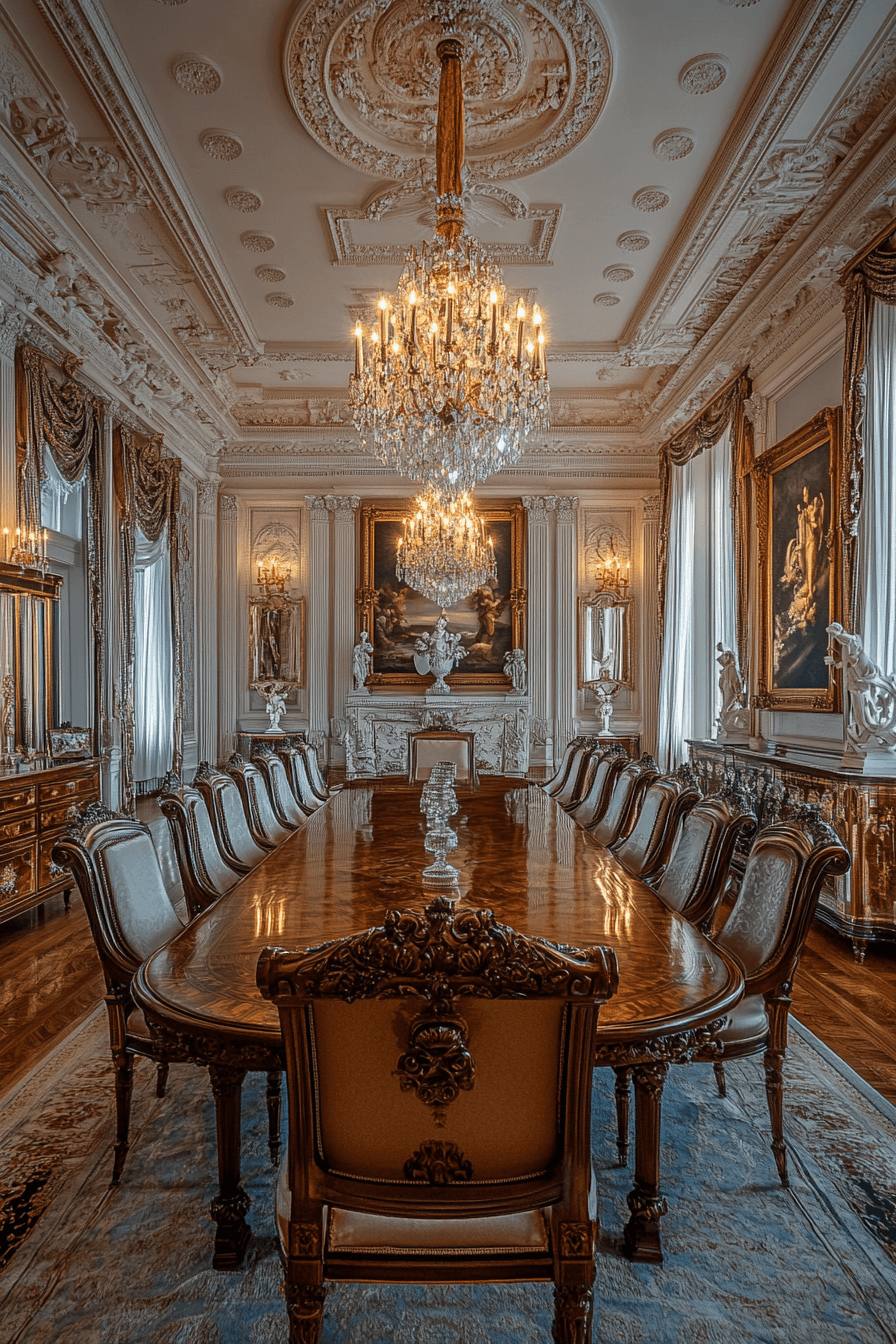
Sophisticated symmetry is central to neoclassical interior design, especially in dining spaces. This approach creates a balanced, harmonious environment that is perfect for formal entertaining. A centrally placed dining table, flanked by an even number of chairs and symmetrically arranged decor, enhances the orderly aesthetic. Rich wood finishes and a crystal chandelier reinforce the room’s elegance.
5. Timeless Ivory Bedroom Elegance
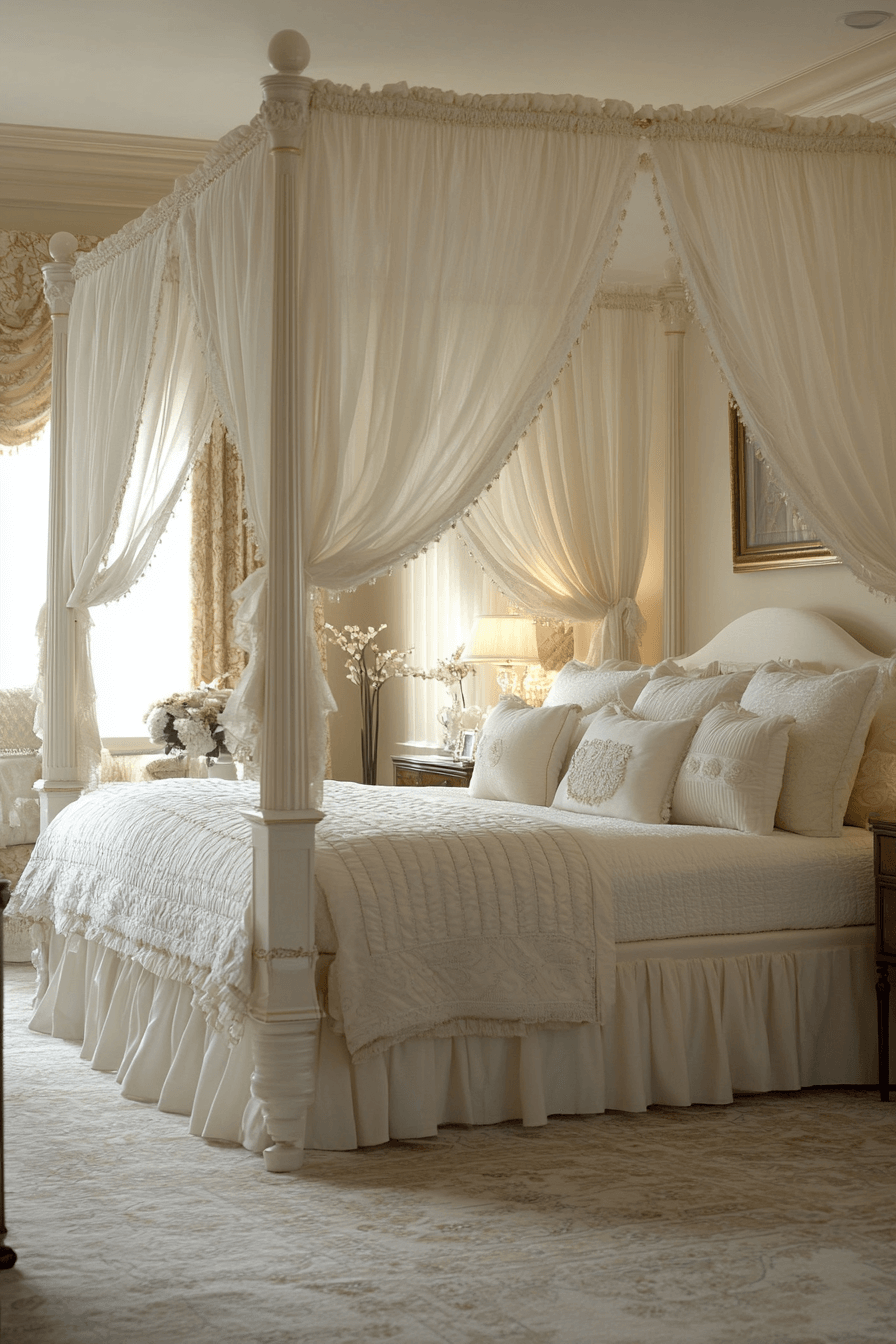
Timeless ivory bedrooms in neoclassical interior design exude calmness and elegance. The soft palette facilitates a light and airy atmosphere, making the room feel spacious and luxurious. Ornate headboards and plush fabrics like silk or velvet add a touch of opulence, while classical artwork and subtle gold accents provide depth. Strategic lighting enhances the serene mood, perfect for relaxation.
6. Luxurious Gilt-Edged Mirrors and Accessories
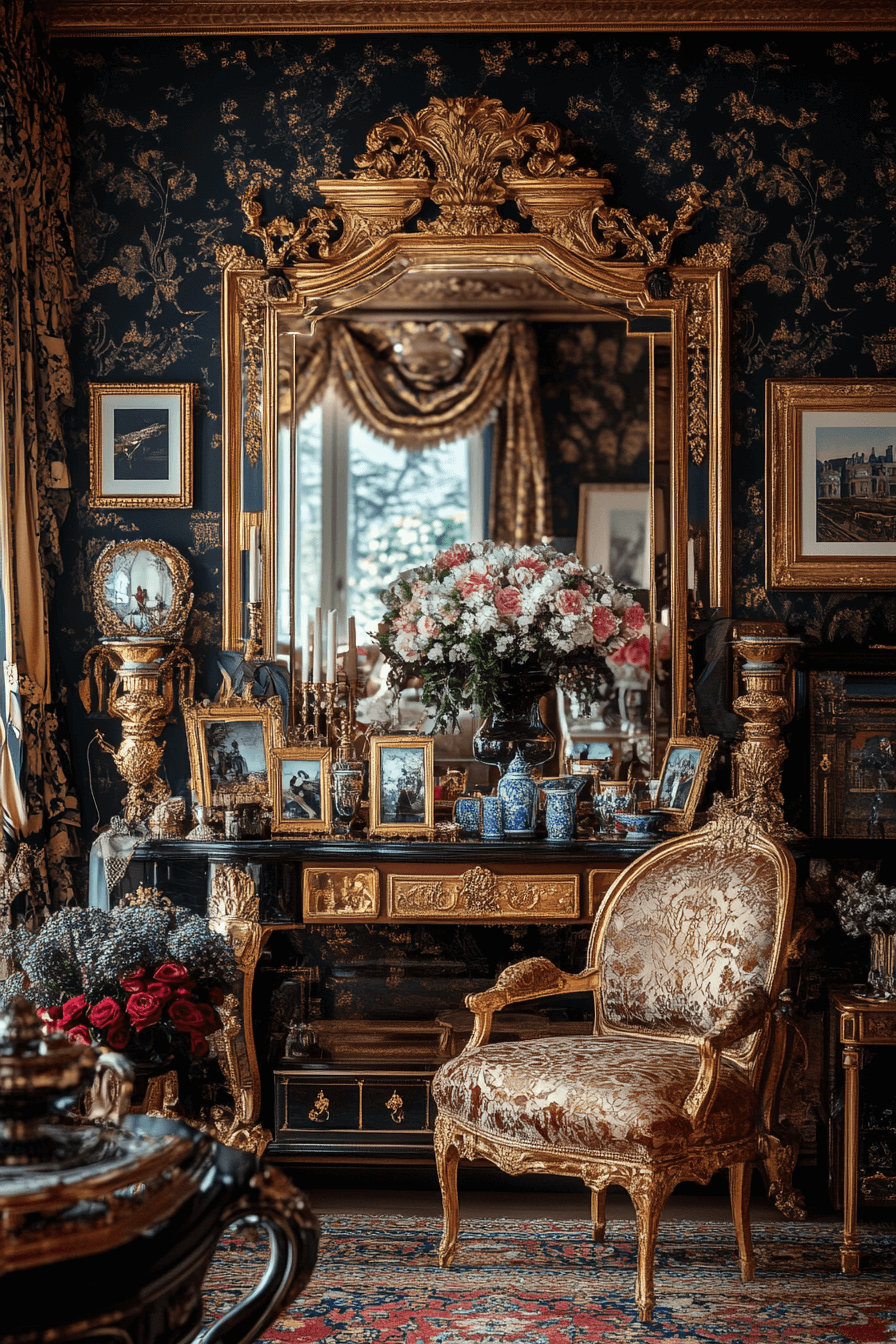
Luxurious gilt-edged mirrors and accessories are pivotal in neoclassical interior design, reflecting light and adding decorative elegance to any room. These mirrors serve not only a functional purpose but also act as artwork, with ornate carvings and shimmering gold leaf finish. Placed above a fireplace or in a dining room, they expand the space visually and add a luxurious feel. Complementary accessories like candle holders and picture frames tie the look together.
7. Classic Blue and Cream Drawing Rooms
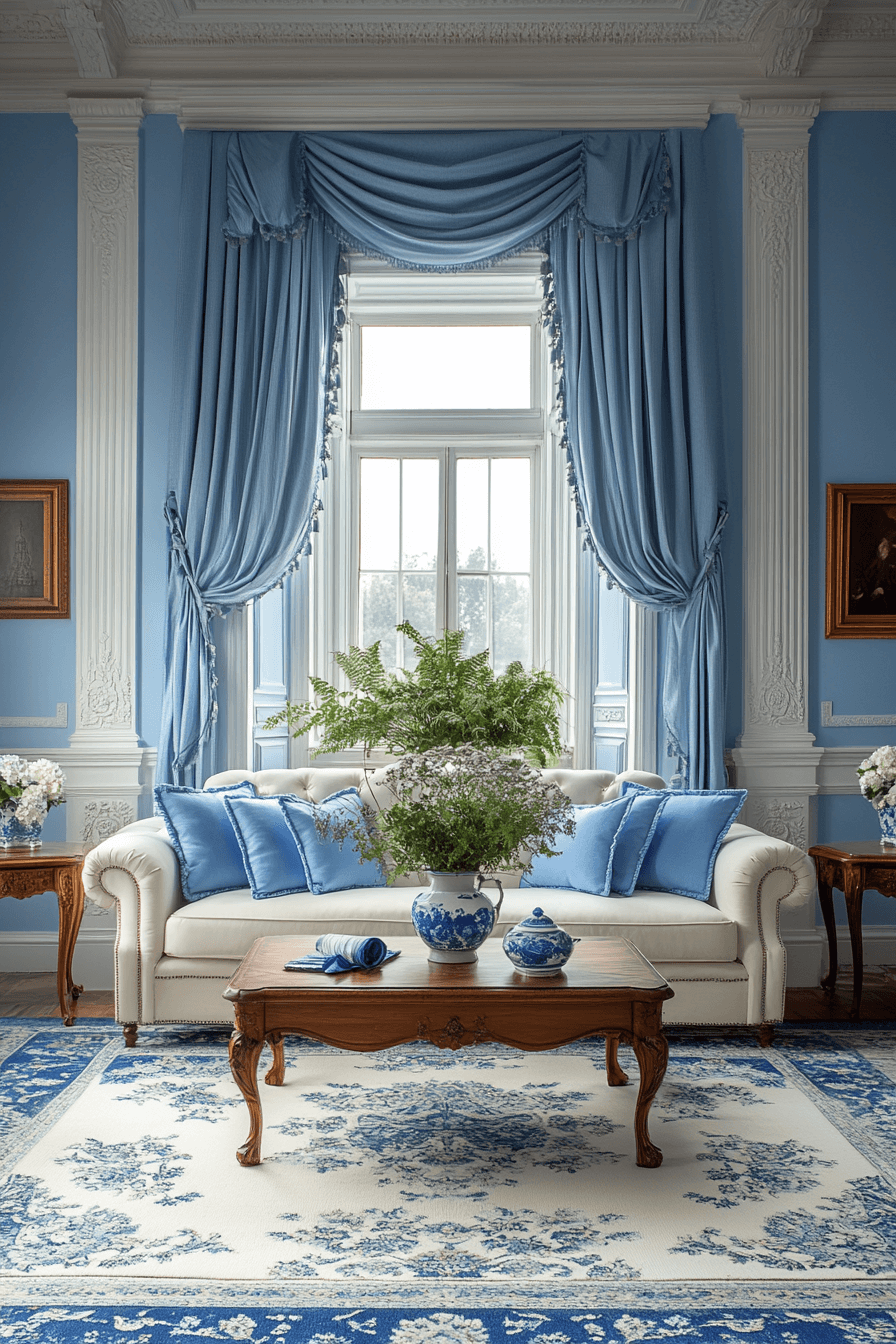
Classic blue and cream drawing rooms capture the serene and balanced essence of neoclassical interior design. The soft blue walls contrast beautifully with cream-colored moldings, creating a refined color scheme that soothes and welcomes. Elegant furniture in traditional shapes, such as Chesterfield sofas and wingback chairs, enhance the room’s historical appeal. Floral arrangements and classical paintings add a touch of nature and artistry.
8. Refined Architectural Moldings
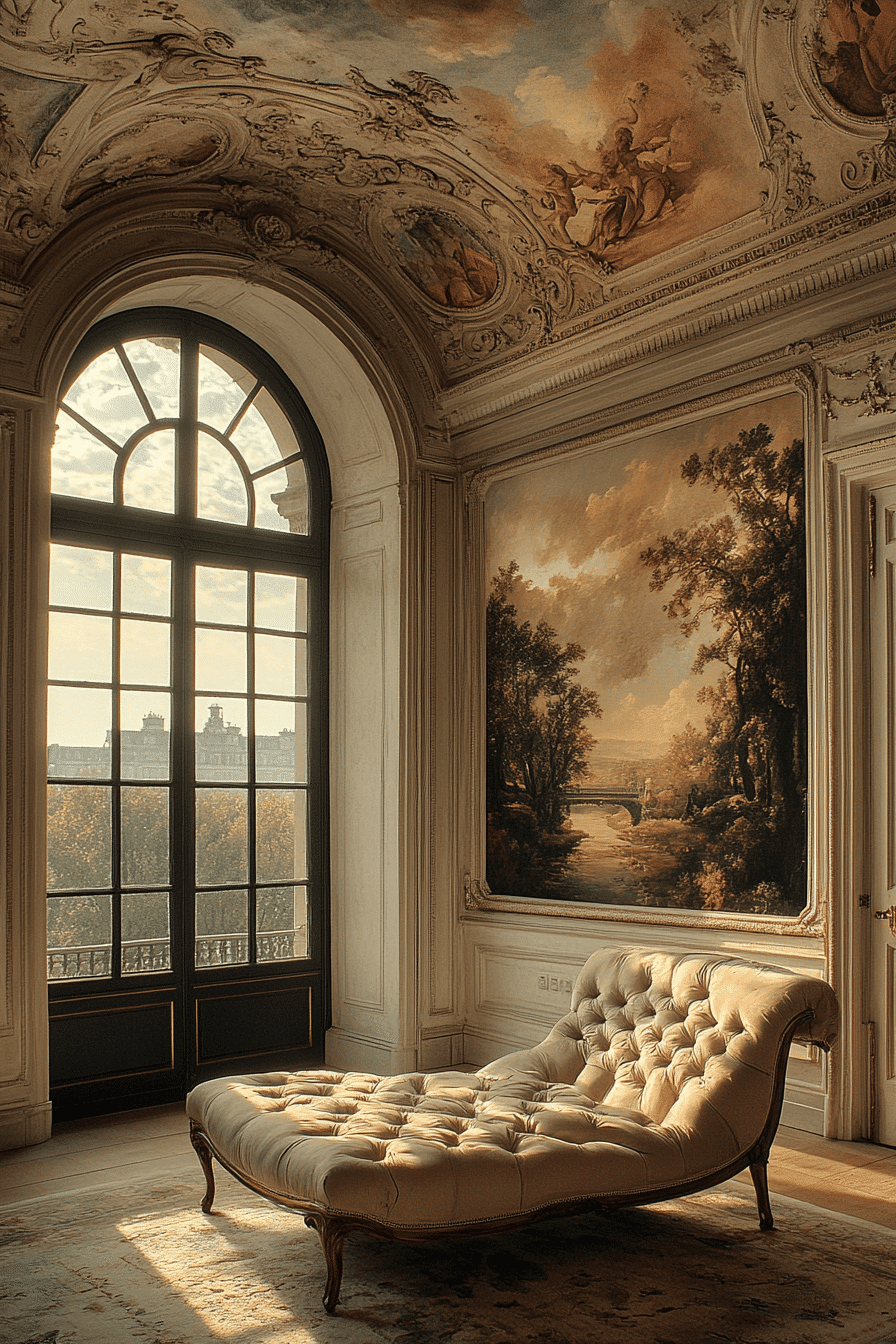
Refined architectural moldings are essential in neoclassical interior design, adding depth and detail to walls and ceilings. These elements, often in white or cream, frame rooms with their intricate patterns, drawing attention to the heights and borders of the space. When paired with grand curtains and sophisticated lighting, the effect is both dramatic and cohesive. Moldings can be gilded for a luxurious touch or left matte for a subtler elegance.
9. Plush Velvet Seating Nooks
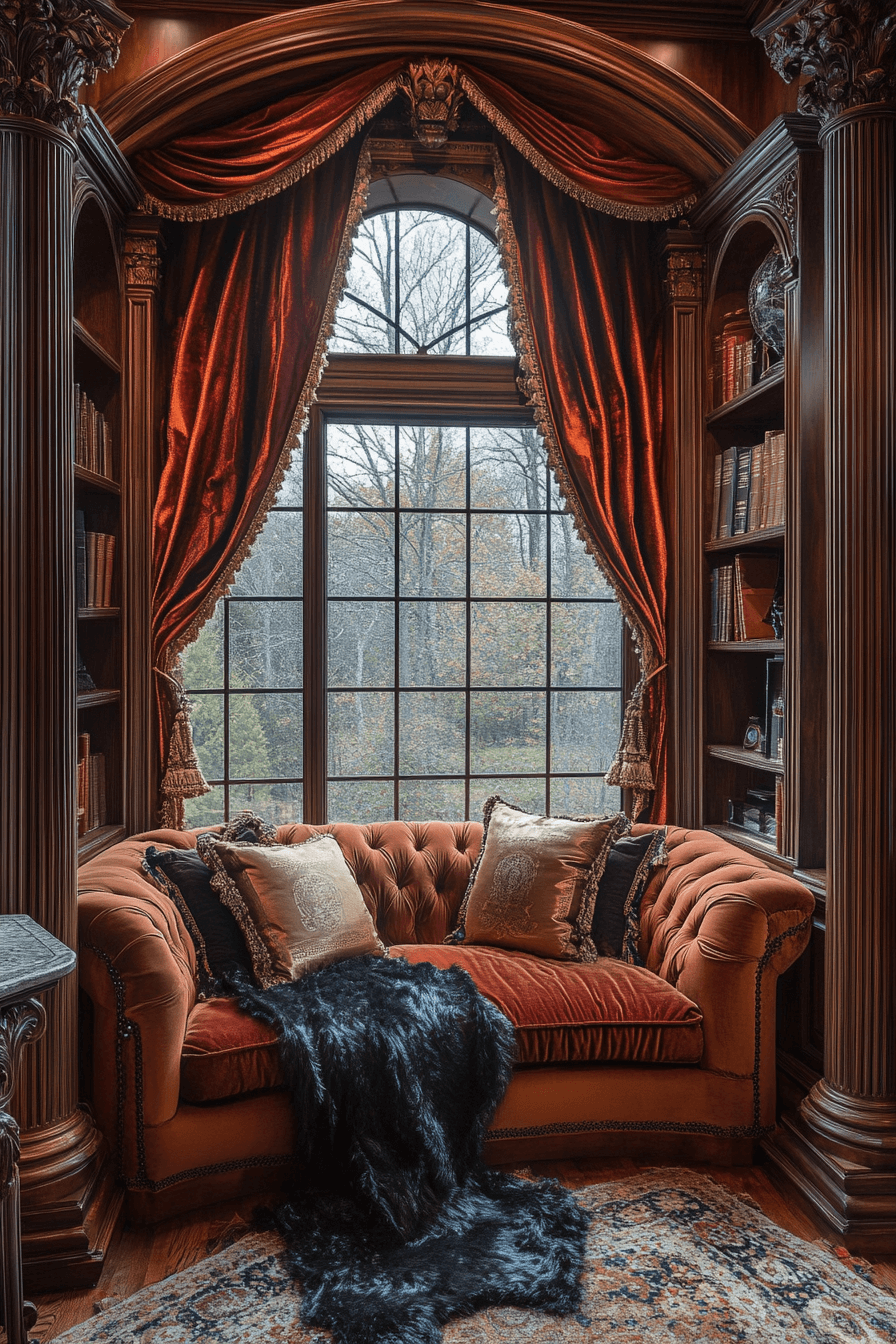
Plush velvet seating nooks in neoclassical interior design provide a luxurious spot for relaxation and conversation. These nooks often feature curved lines and rich, deep colors that invite occupants to linger. Accented with classical elements like small columns or ornate carvings, the nooks are both functional and decorative. Soft pillows and throws add comfort and style, making the space ideal for reading or enjoying a quiet cup of tea.
10. Majestic Ceiling Frescoes
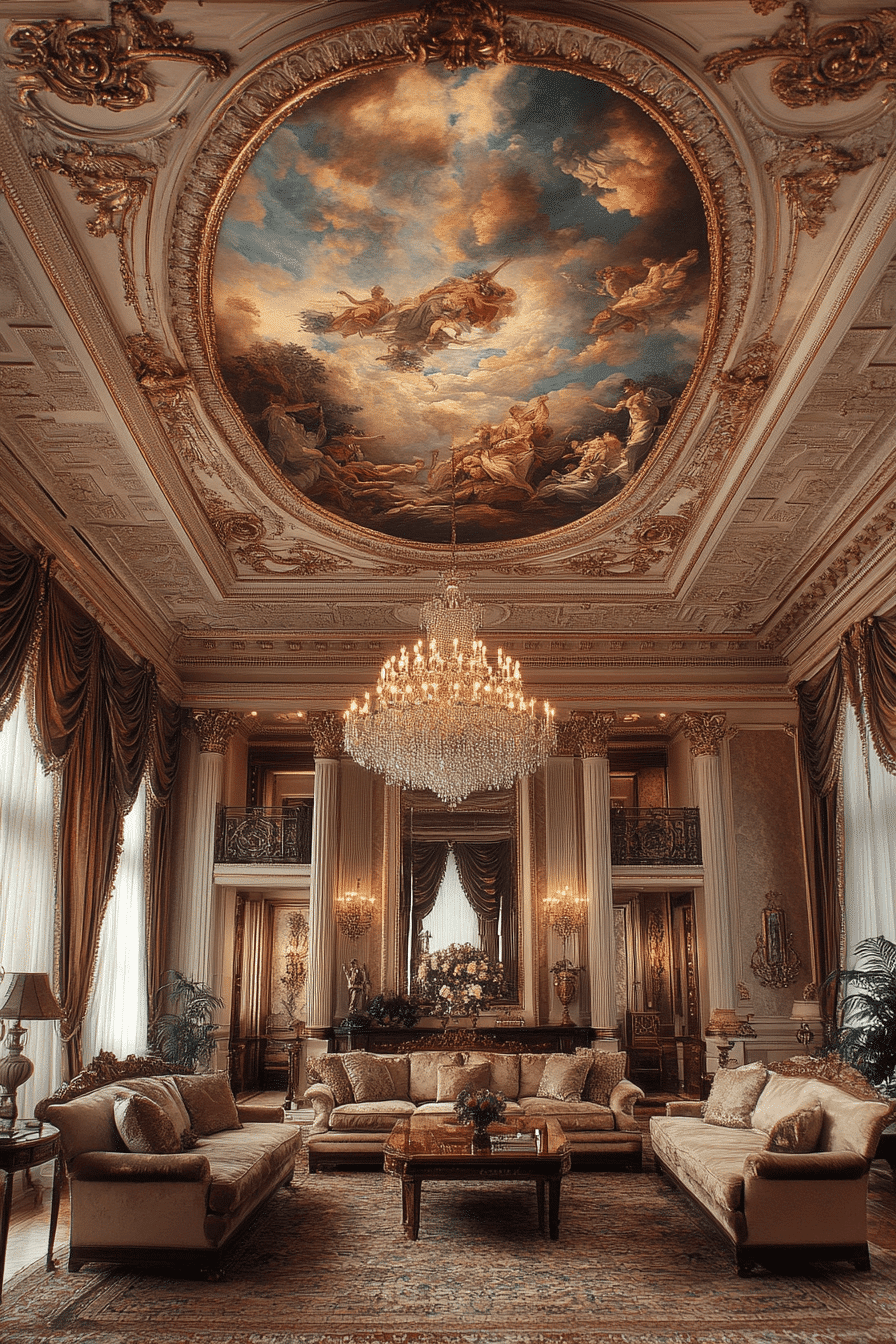
Majestic ceiling frescoes are a bold statement in neoclassical interior design, bringing art and history directly into the home. These artworks often depict scenes from mythology or nature, rendered in soft pastels or vibrant hues. Positioned centrally, they draw the eye upward, enhancing the vertical dimensions of the room. Integrated lighting can highlight the frescoes’ details, making them a central feature of the decor.
11. Sublime Sculptural Decor
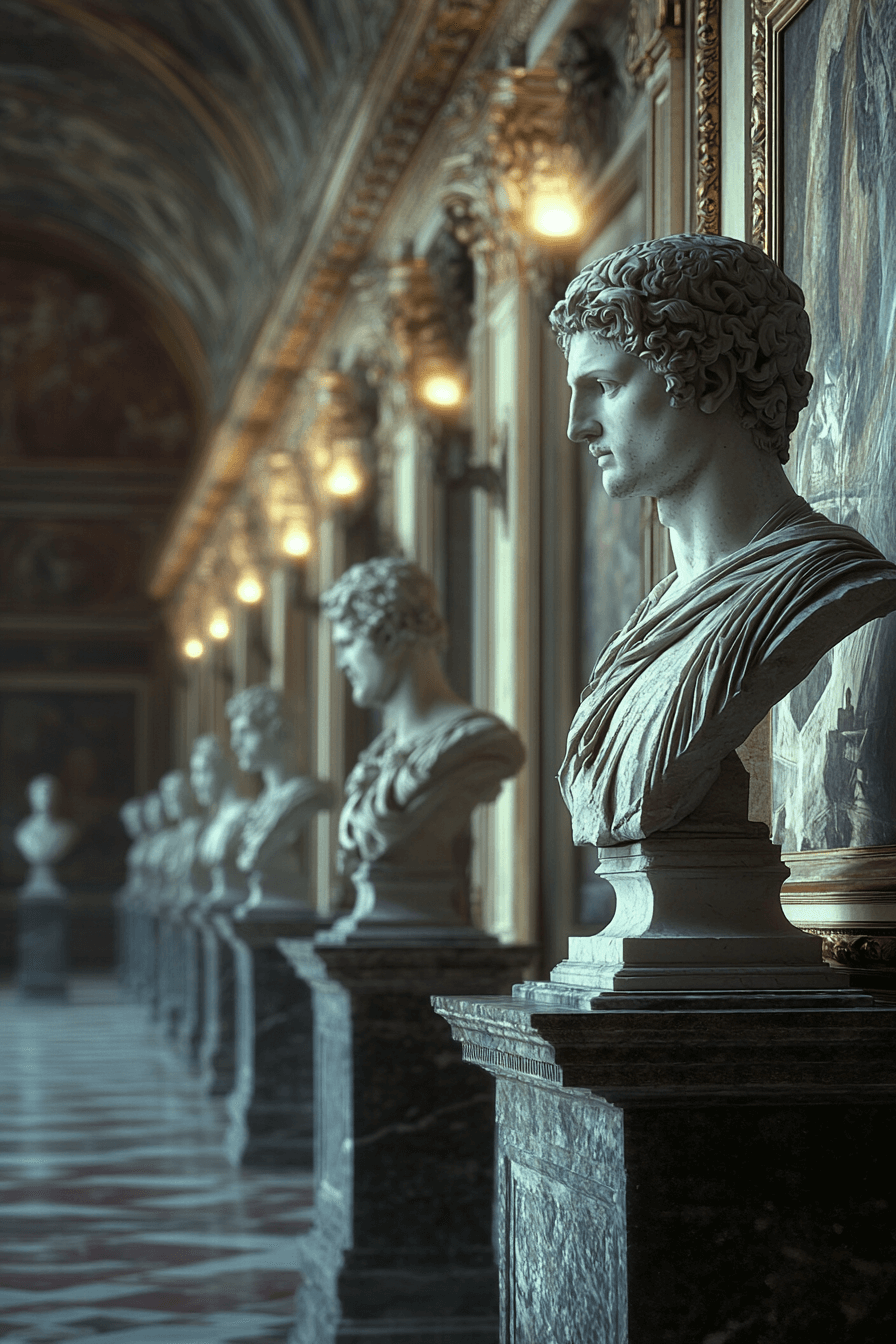
Sublime sculptural decor in neoclassical interior design adds a three-dimensional aspect that enhances the room’s aesthetic and historical depth. Statues of classical figures or busts on pedestals celebrate the beauty of the human form and classical art. Positioned in entryways or living rooms, these sculptures serve as focal points, imbuing the space with a sense of grace and history. Paired with understated backgrounds, the sculptures stand out as exquisite features.
12. Graceful Arch Window Designs

Graceful arch window designs are a distinctive feature in neoclassical interior design, adding elegance and architectural interest. These windows not only enhance the external facade but also bring in natural light in a visually appealing manner. Draped with heavy curtains or adorned with detailed trims, arch windows echo the classical curves found in other decorative elements. They can be paired with tall plants or statuary to emphasize their height and shape.
13. Stately Fireplace Mantels
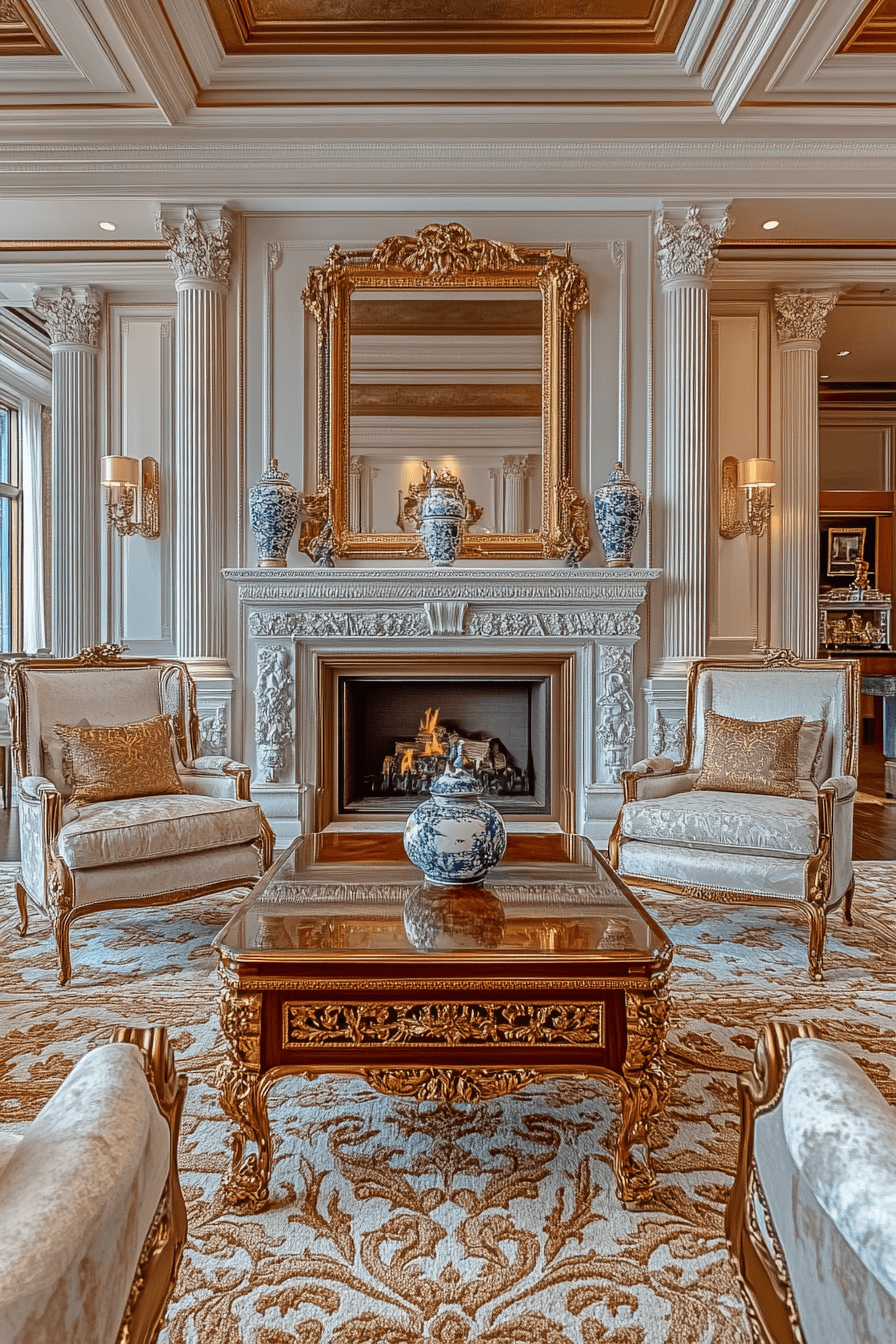
Stately fireplace mantels in neoclassical interior design are often elaborately carved and serve as the centerpiece of living rooms or studies. These mantels can be adorned with classical elements like scrolls, foliage, or figures, echoing themes found throughout the room. Overmantel mirrors or paintings enhance the mantel’s importance as a focal point, while luxurious fireside tools add functionality and style. The overall effect is warm, inviting, and richly detailed.
14. Regal Blue and Gold Studies
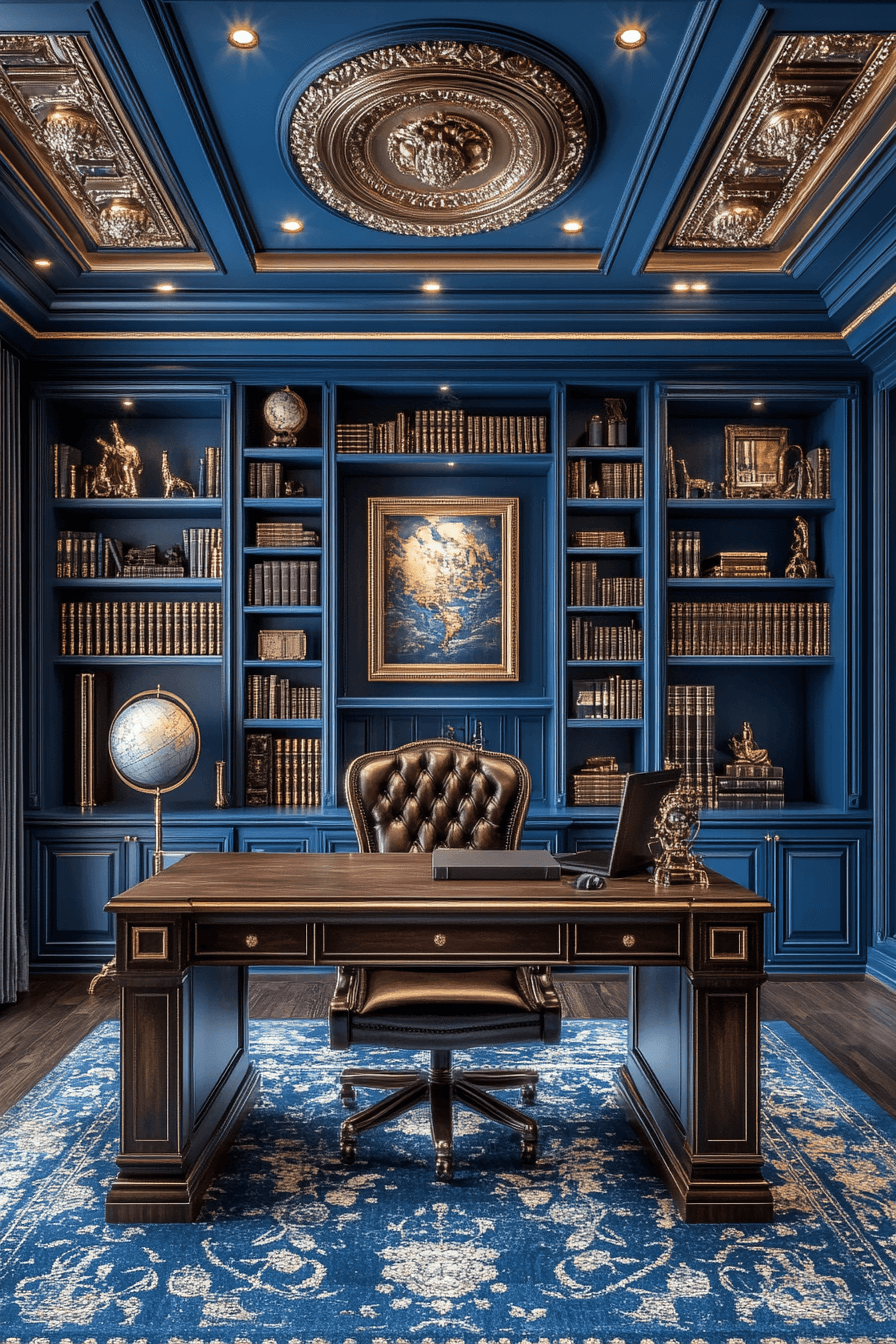
Regal Blue and Gold studies in neoclassical interior design exude a sense of sophistication and power. The deep blue provides a rich backdrop for gilded bookcases and desks, highlighting the opulence of the gold. Luxurious fabrics like silk or brocade in window treatments or chair upholstery add a layer of texture and luxury. Strategic lighting emphasizes the reflective qualities of the gold, making the space vibrant and dynamic.
15. Polished Wood Floor Grandeur
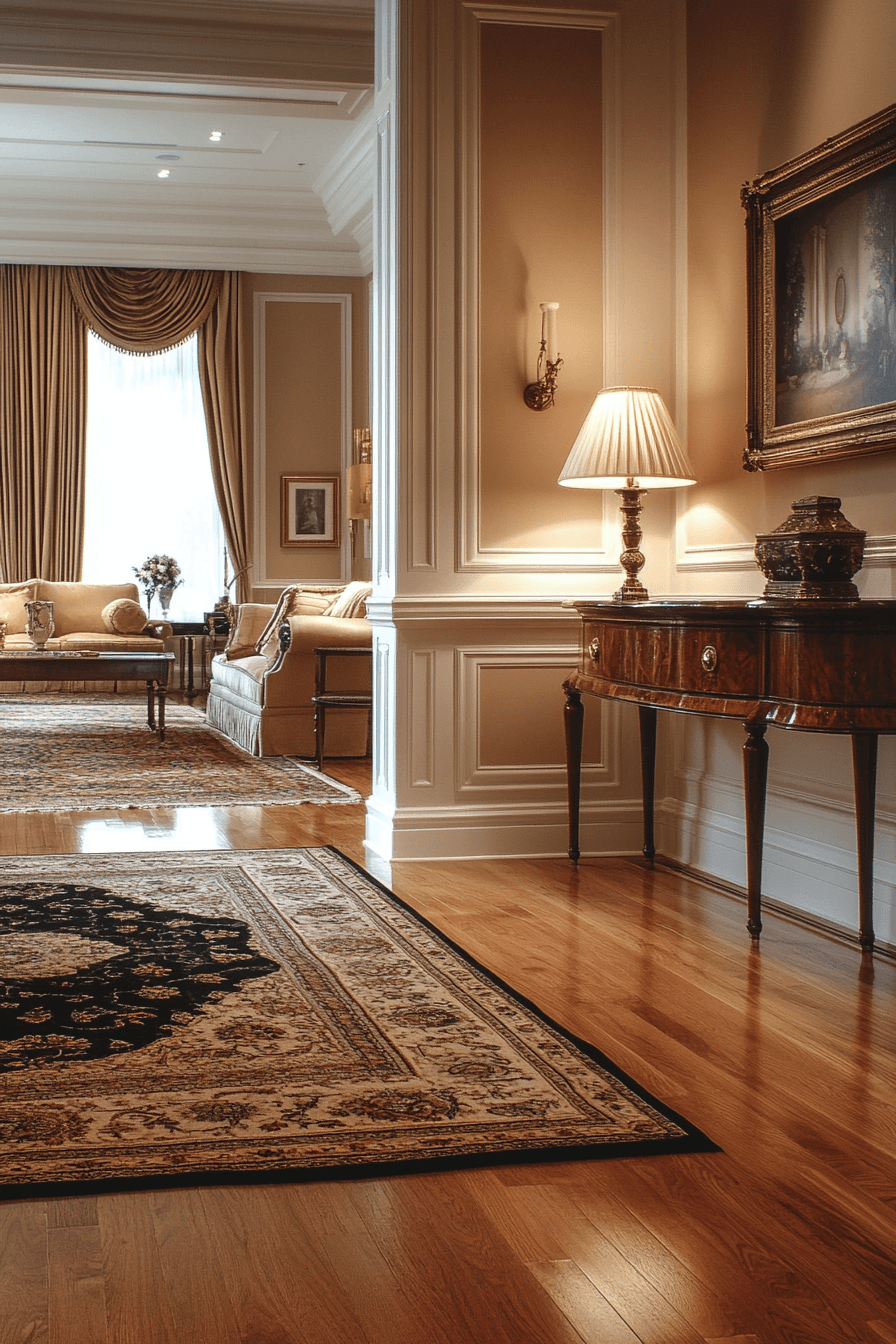
Polished wood floors in neoclassical interior design enhance the elegance and warmth of any room. The gleaming surfaces reflect light, brightening the space and highlighting the furniture and decor. Rugs in classical patterns or colors can define different areas while adding comfort and style. The continuity of wood flooring throughout the home creates a cohesive and expansive feel, ideal for the open layouts often seen in neoclassical designs.
16. Exquisite Crystal Chandelier Foyers
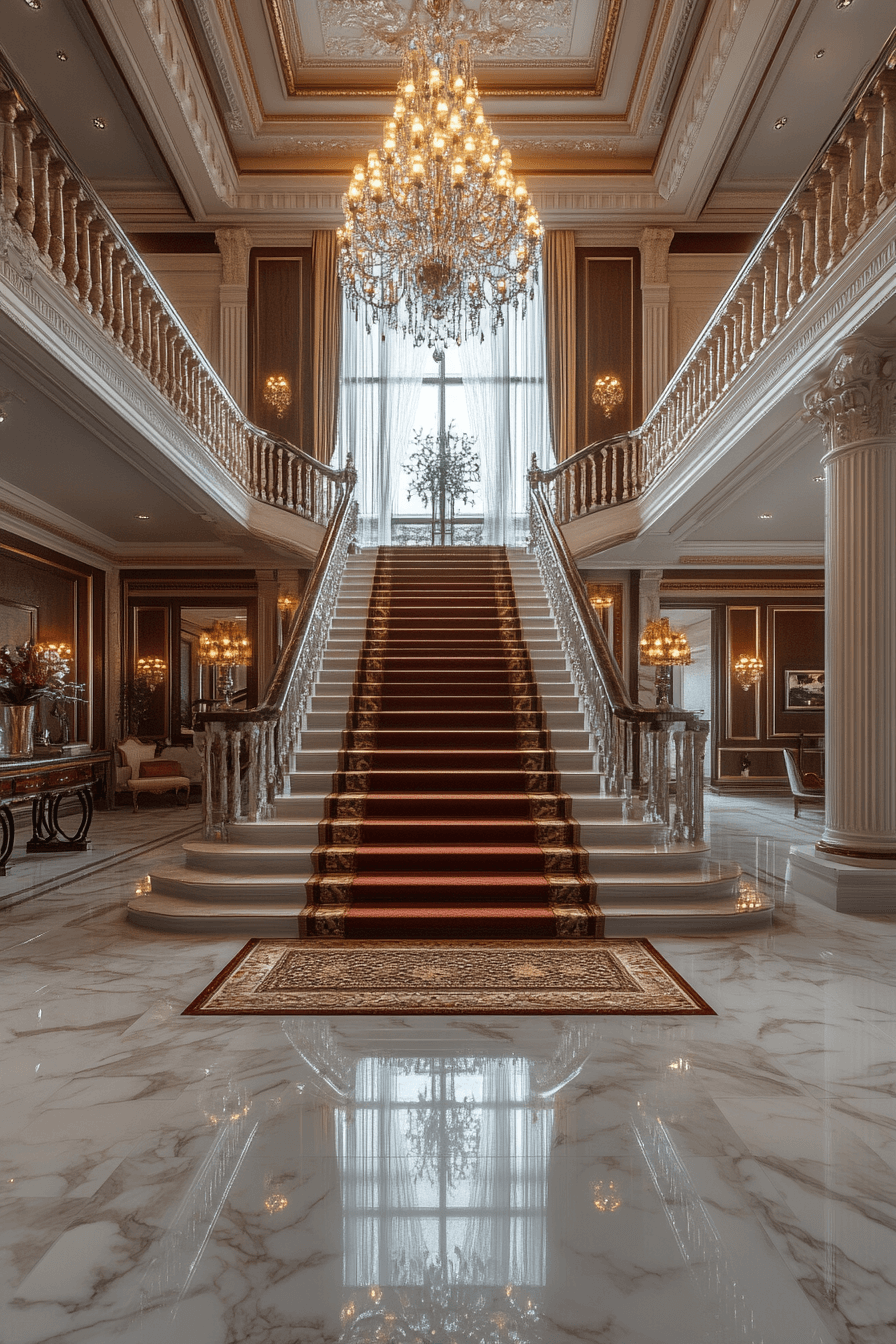
Exquisite crystal chandeliers in neoclassical interior design foyers make a dramatic first impression. These chandeliers not only illuminate the entryway but also act as a luxurious statement piece that sets the tone for the rest of the home. Their intricate designs and sparkling light complement other neoclassical elements such as marble floors and columned archways. The light reflected through the crystals casts patterns on the walls and floor, adding a dynamic visual element.
17. Serene White and Pastel Bedrooms
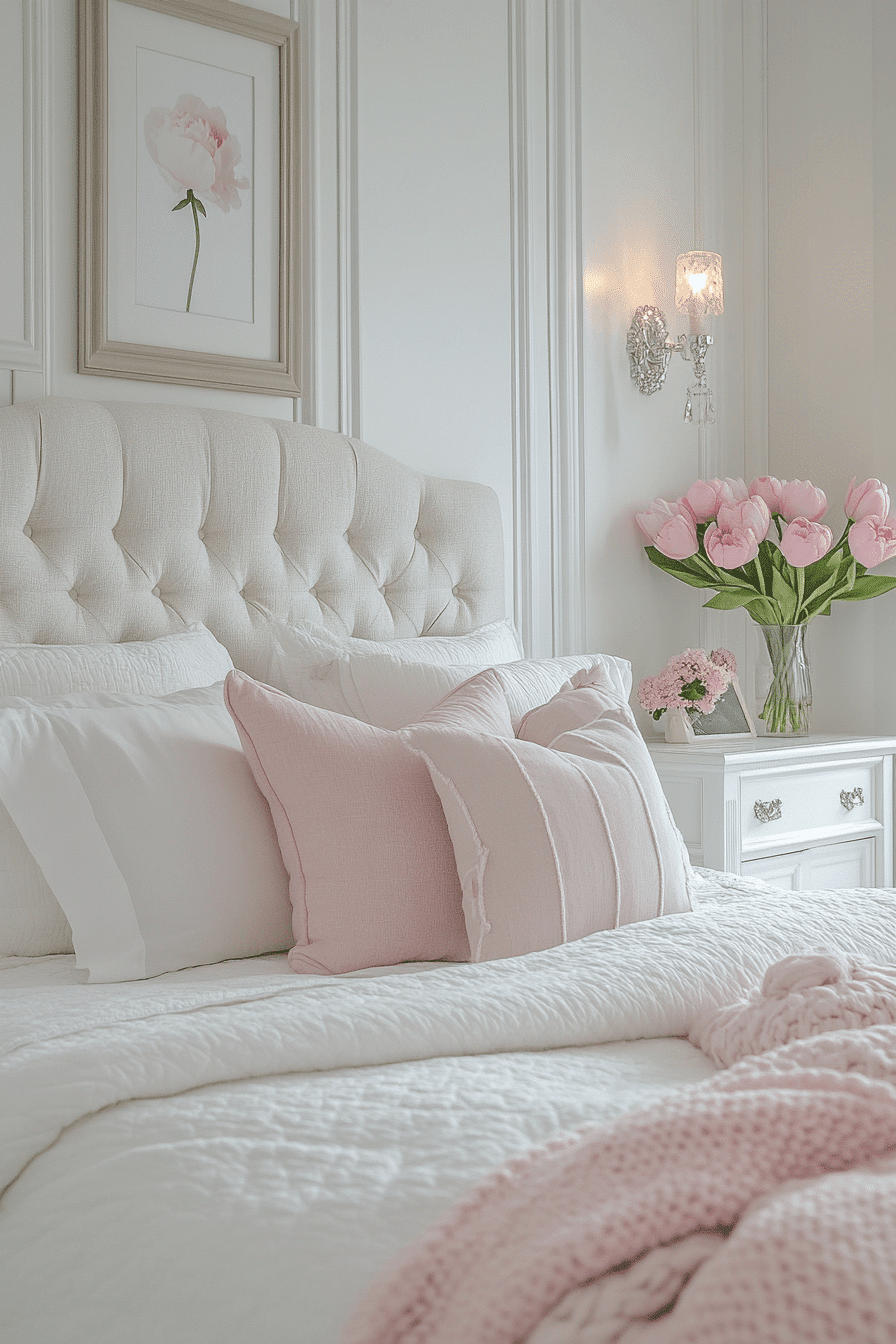
Serene white and pastel bedrooms in neoclassical interior design provide a calm and restful retreat. The light colors enlarge the space visually and create a peaceful ambiance. Soft textiles in pastels add a touch of color without overwhelming the serene feel. Classical furniture in white or cream maintains the light theme, while ornamental mirrors or wall art add a hint of luxury.
18. Ornate Ceiling Medallions and Rosettes

Ornate ceiling medallions and rosettes in neoclassical interior design add architectural interest and a sense of history. These decorative elements are often centered around light fixtures, enhancing their appearance and the overall decor. Painted in gold or left in classic white, they contribute to the room’s elegant aesthetic. Paired with elaborate crown moldings, the ceiling becomes a work of art in itself.
19. Lavish Silver Accented Libraries

Lavish silver accented libraries in neoclassical interior design reflect sophistication and intellect. Silver accents on shelving, lamps, and frames add a subtle shimmer that complements the rich tones of books and wood paneling. Upholstered chairs in luxurious fabrics invite reading and relaxation. A well-placed silver ornament or statuette can serve as a conversation piece, adding character and refinement.
20. Imposing Stone Pedestal Displays
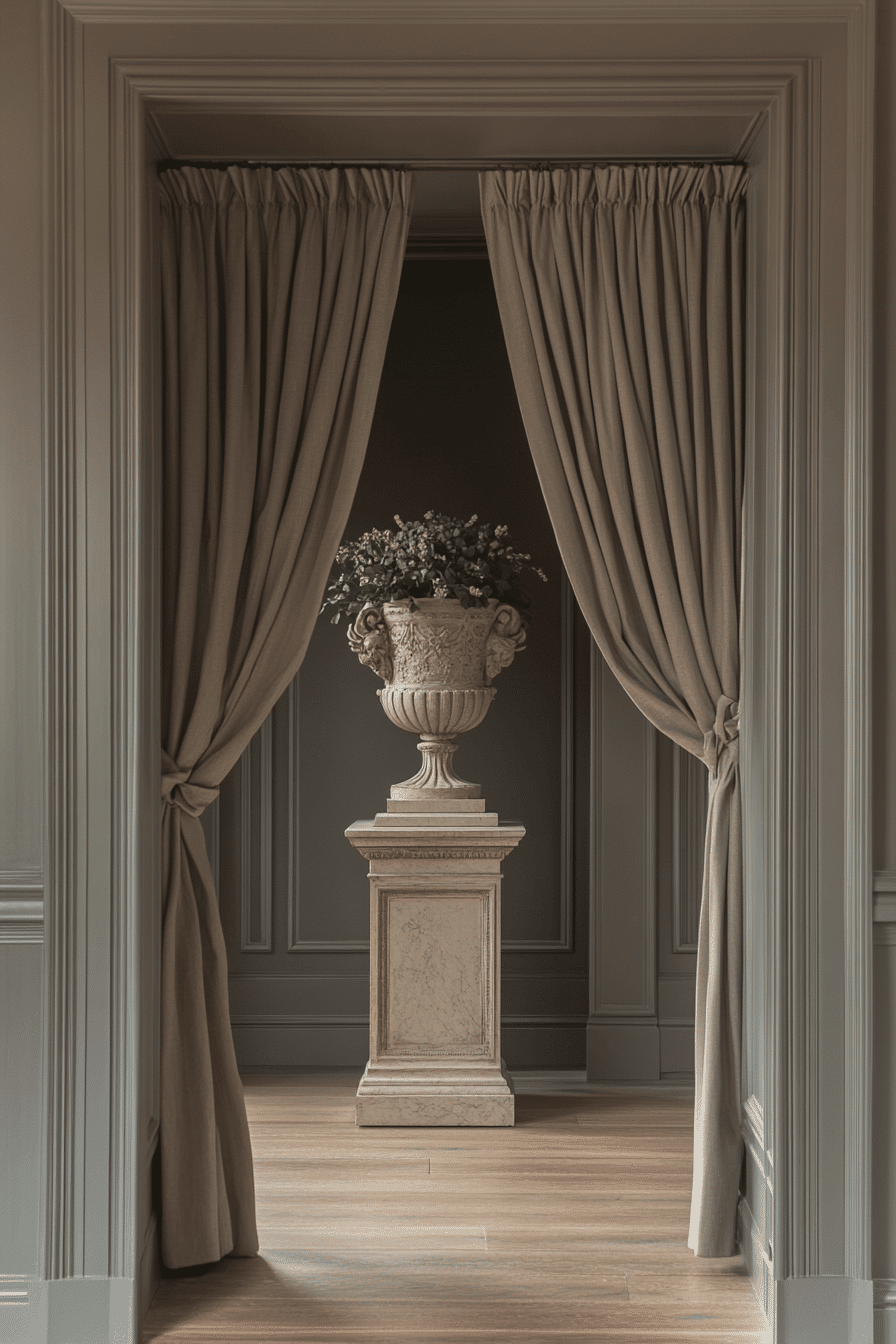
Imposing stone pedestal displays in neoclassical interior design serve as a dramatic showcase for art, sculptures, or floral arrangements. These pedestals can be crafted from marble or granite, adding a solid, timeless element to the decor. Positioned in foyers or main hallways, they draw attention and set a formal tone. The natural stone complements other neoclassical materials like wood and metal, integrating seamlessly into the overall design.
21. Grand Staircases with Wrought Iron Railings
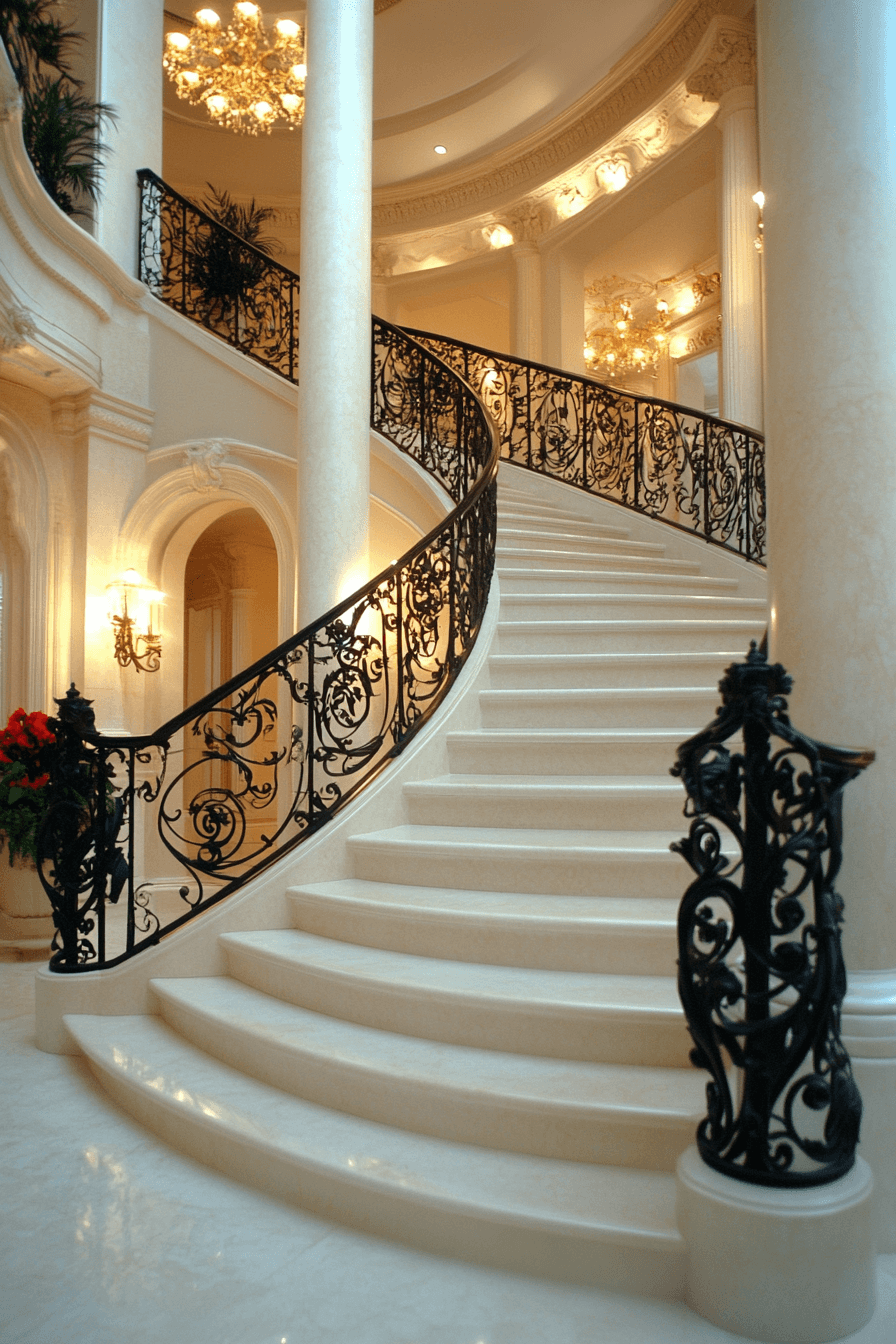
Grand staircases with wrought iron railings in neoclassical interior design are not only functional but also artistic. The intricate patterns of the railings add a decorative element that echoes the ornamental complexity of neoclassical design. These staircases can become a central architectural feature, especially when combined with marble steps or polished wood. Elegant stair runners or lighting can enhance the visual impact, making every ascent a grand experience.
22. Opulent Layered Textile Designs
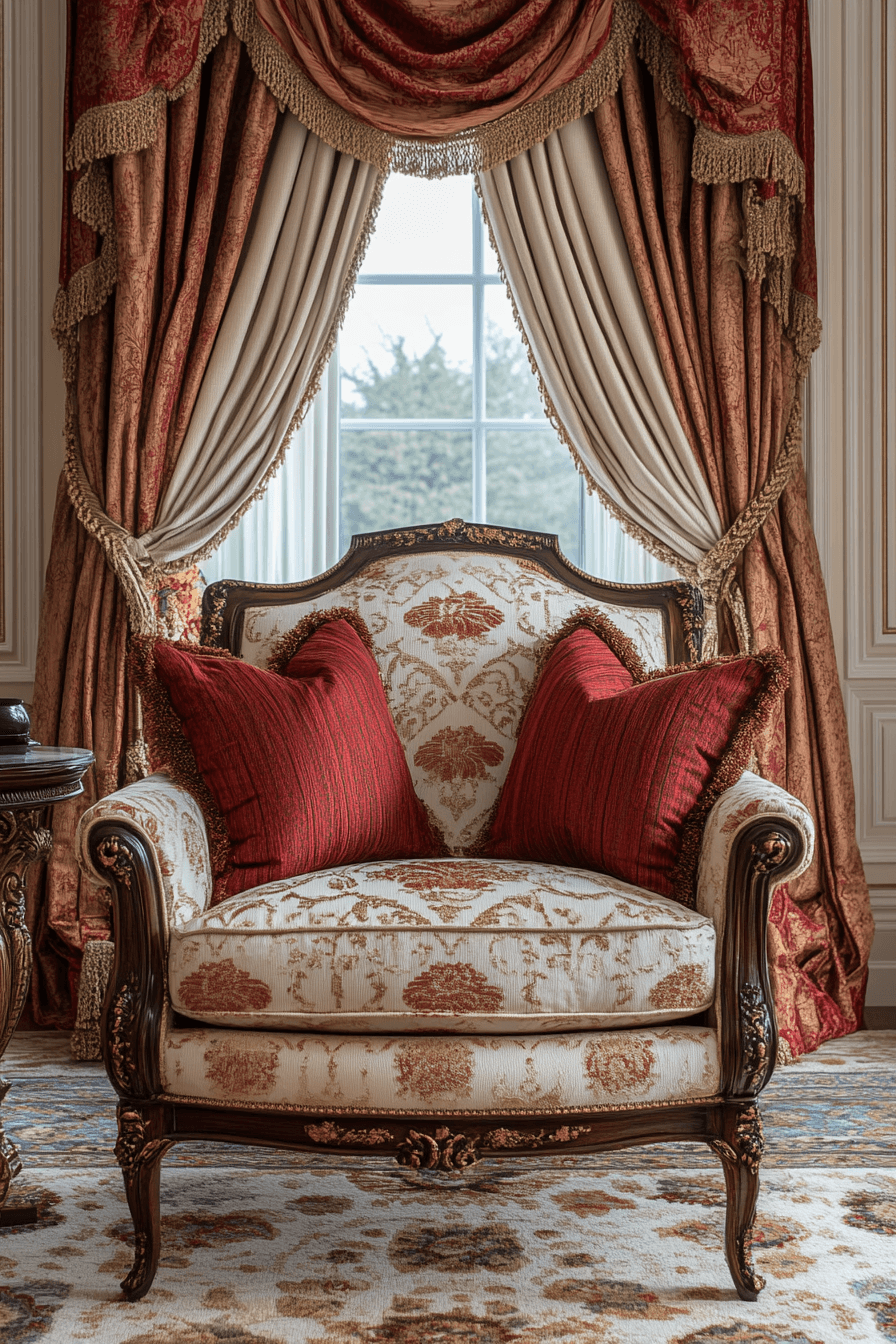
Opulent layered textile designs in neoclassical interior design add depth and luxury to the decor. Rich fabrics like damask or brocade in curtains, upholstery, and cushions introduce pattern and texture. Layering these textiles in coordinated colors builds a lush, tactile environment that is inviting and comfortable. Accents like tassels, fringe, and embroidery enhance the textiles’ decorative quality, contributing to the overall opulence.
23. Classic Frieze and Cornice Details
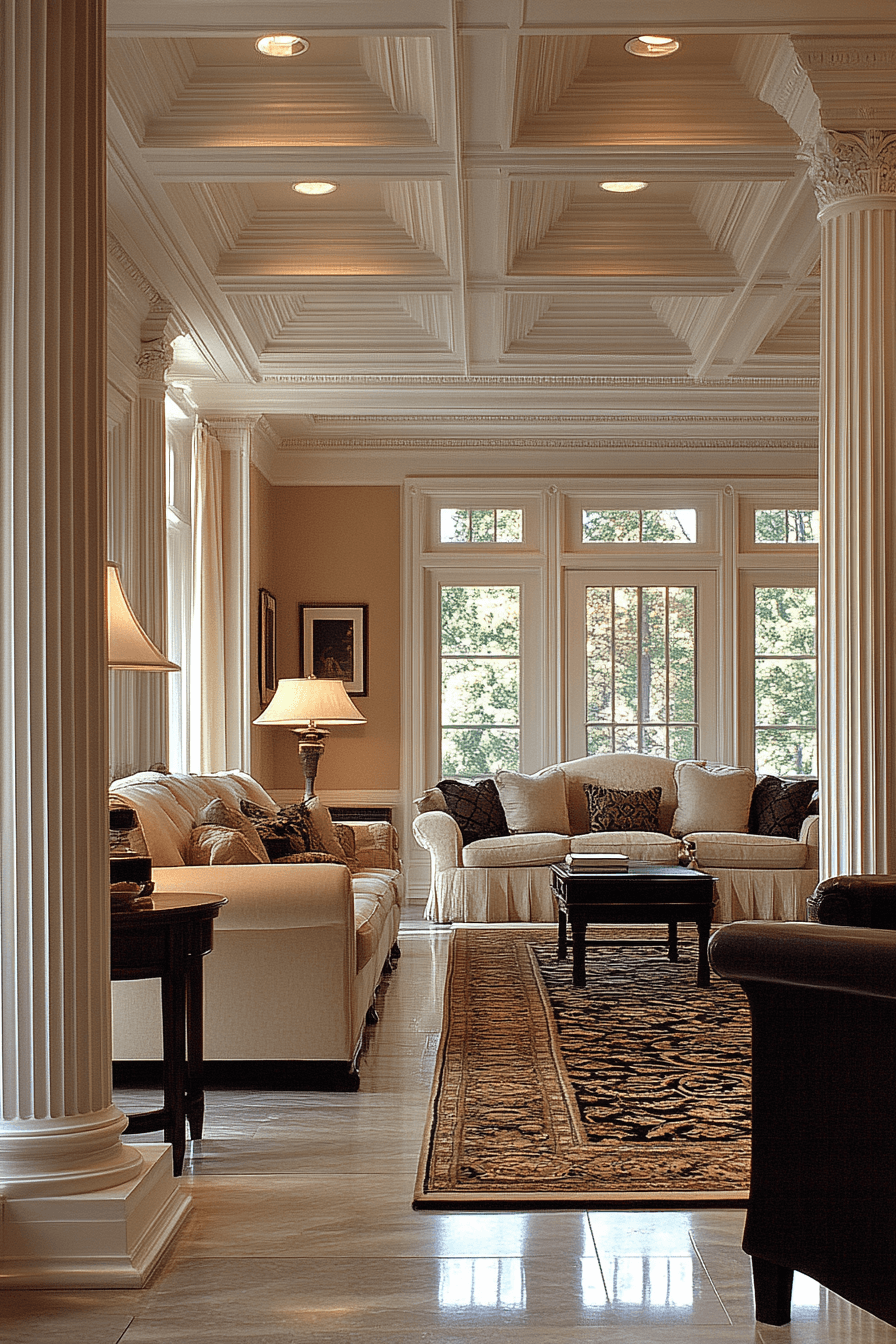
Classic frieze and cornice details in neoclassical interior design enhance the structural elegance of rooms. These decorative bands run along the upper parts of walls and ceilings, often featuring classical motifs such as leaves, vines, or geometric patterns. Painted in contrasting colors or gilded, they frame the room and draw the eye upward, emphasizing the height and scale of the space. Integrating these details adds a layer of refinement and historical authenticity.
24. Formal Symmetrical Garden Views
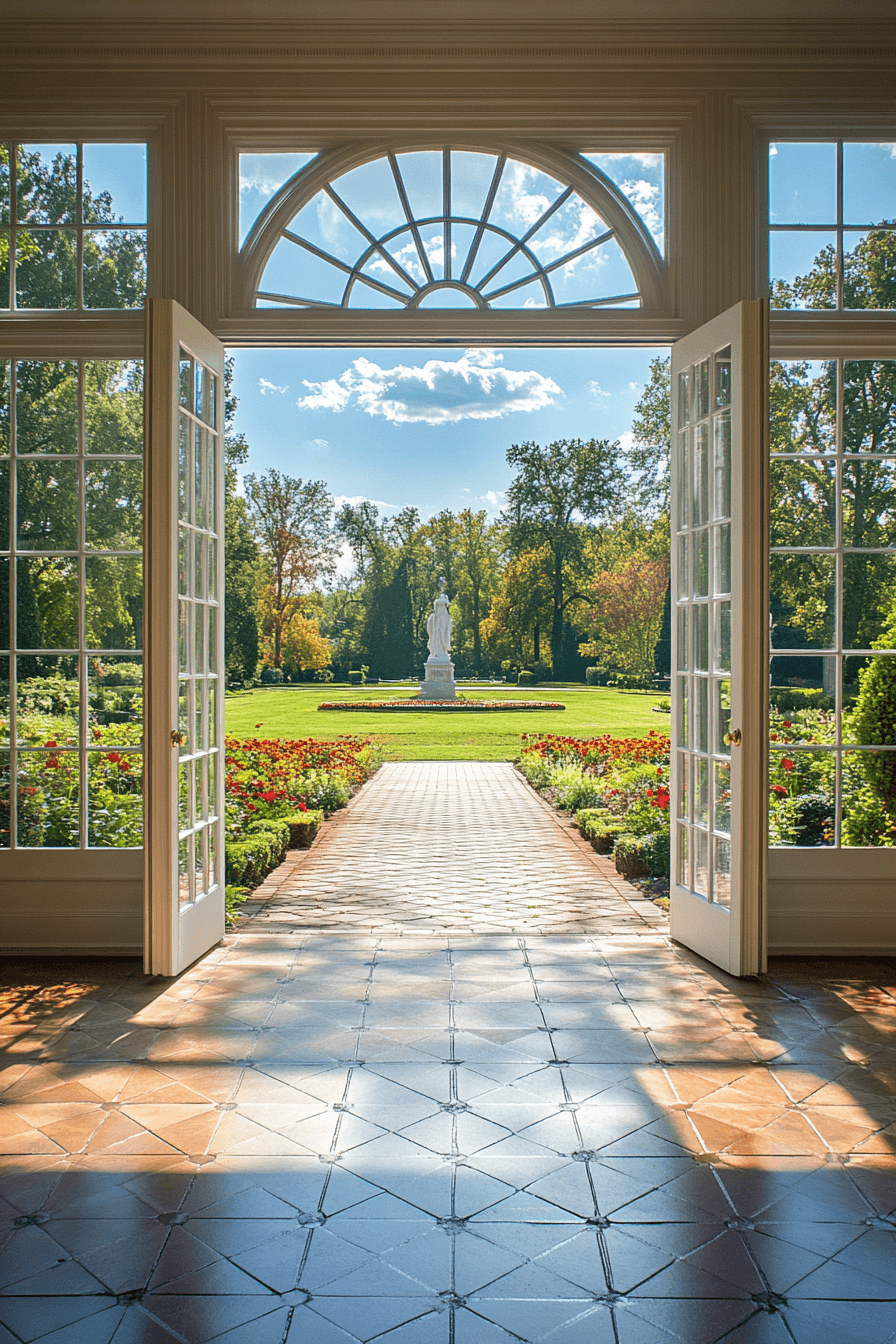
Formal symmetrical garden views complement neoclassical interior design by extending the harmony and order to the outdoors. Large windows or glass doors offer views of meticulously landscaped gardens, with symmetrical layouts that mirror the interior’s design principles. Incorporating elements like classical statues, fountains, or parterres reinforces the connection between indoor and outdoor spaces. Strategic lighting can illuminate the gardens at night, creating a stunning backdrop.
25. Royal Blue Upholstered Dining Chairs
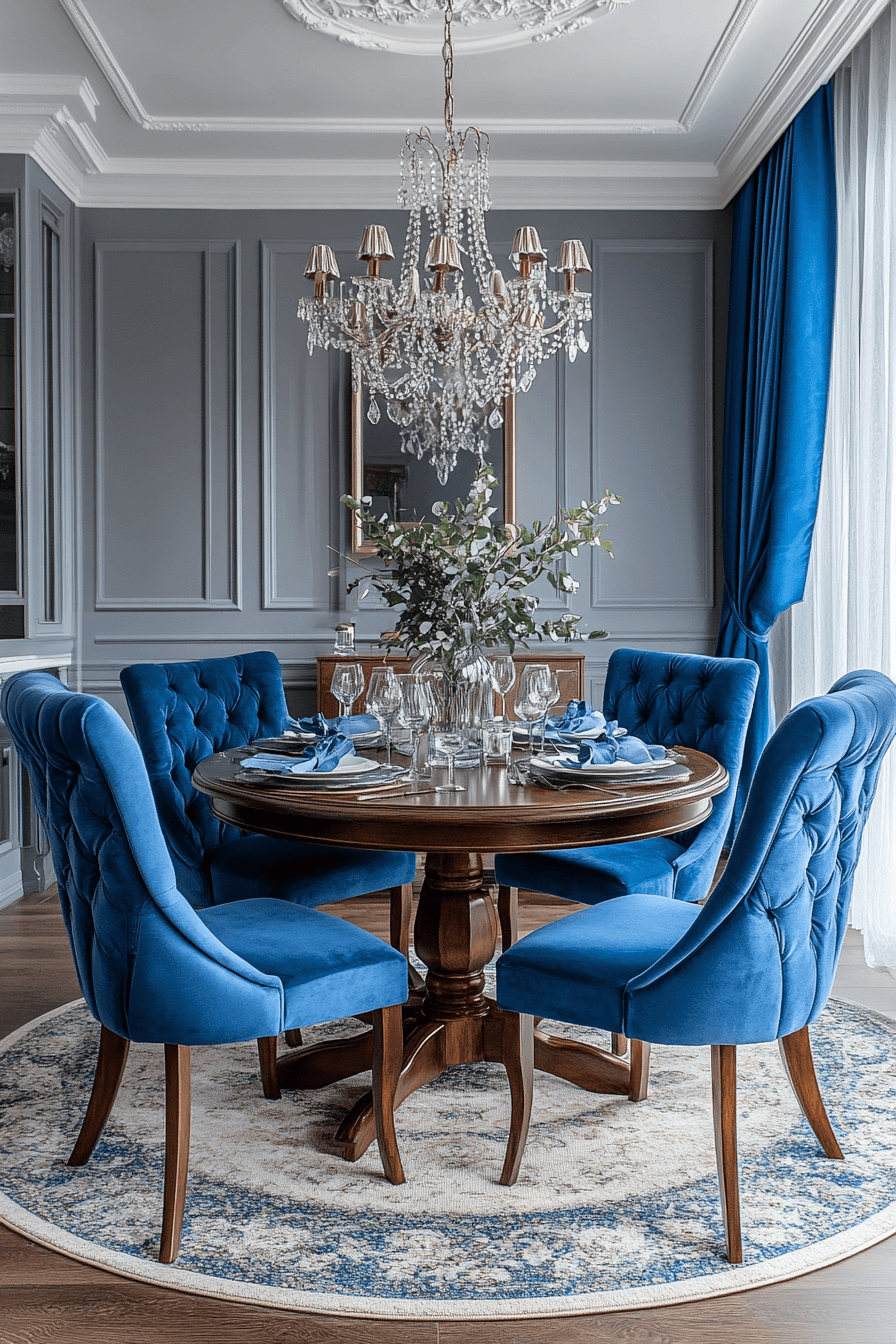
Royal blue upholstered dining chairs in neoclassical interior design add a regal touch to dining rooms. The vibrant blue provides a striking contrast to neutral or white dining tables, drawing attention to the seating area. The rich fabric can be accented with decorative nailhead trim or carved wooden details, enhancing the chairs’ luxurious appearance. Paired with elegant table settings and crystal glassware, the result is a dining space fit for royalty.
26. Elegantly Framed Classical Artworks
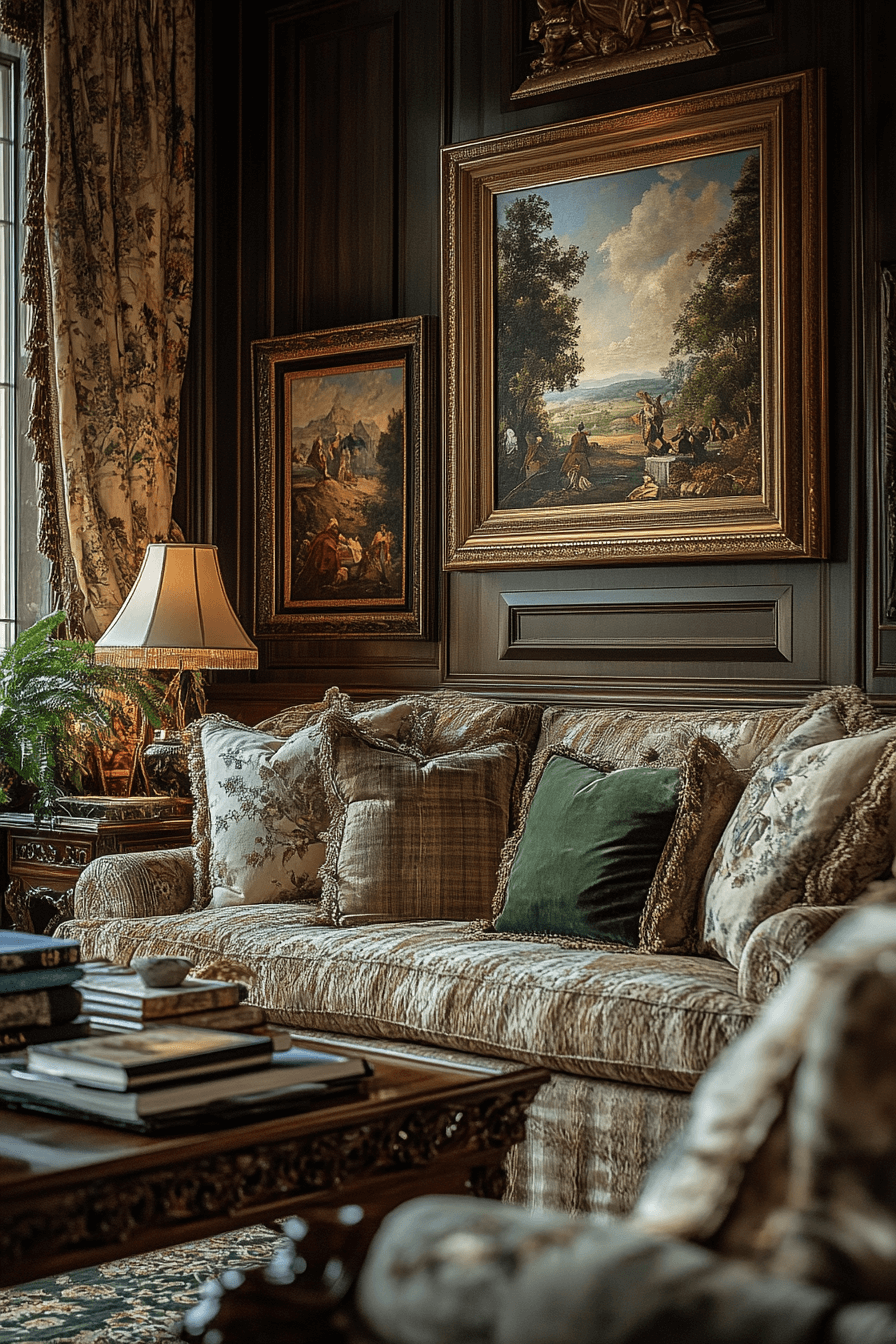
Elegantly framed classical artworks are essential in neoclassical interior design, adding cultural depth and artistic beauty. These pieces, whether original paintings or high-quality reproductions, often depict classical themes or historical scenes. Ornate frames in gold or silver complement the artwork and integrate with other decorative elements in the room. Positioned prominently, they serve as focal points, enriching the interior with a sense of history and sophistication.
27. Palatial Gold Leaf Detailing
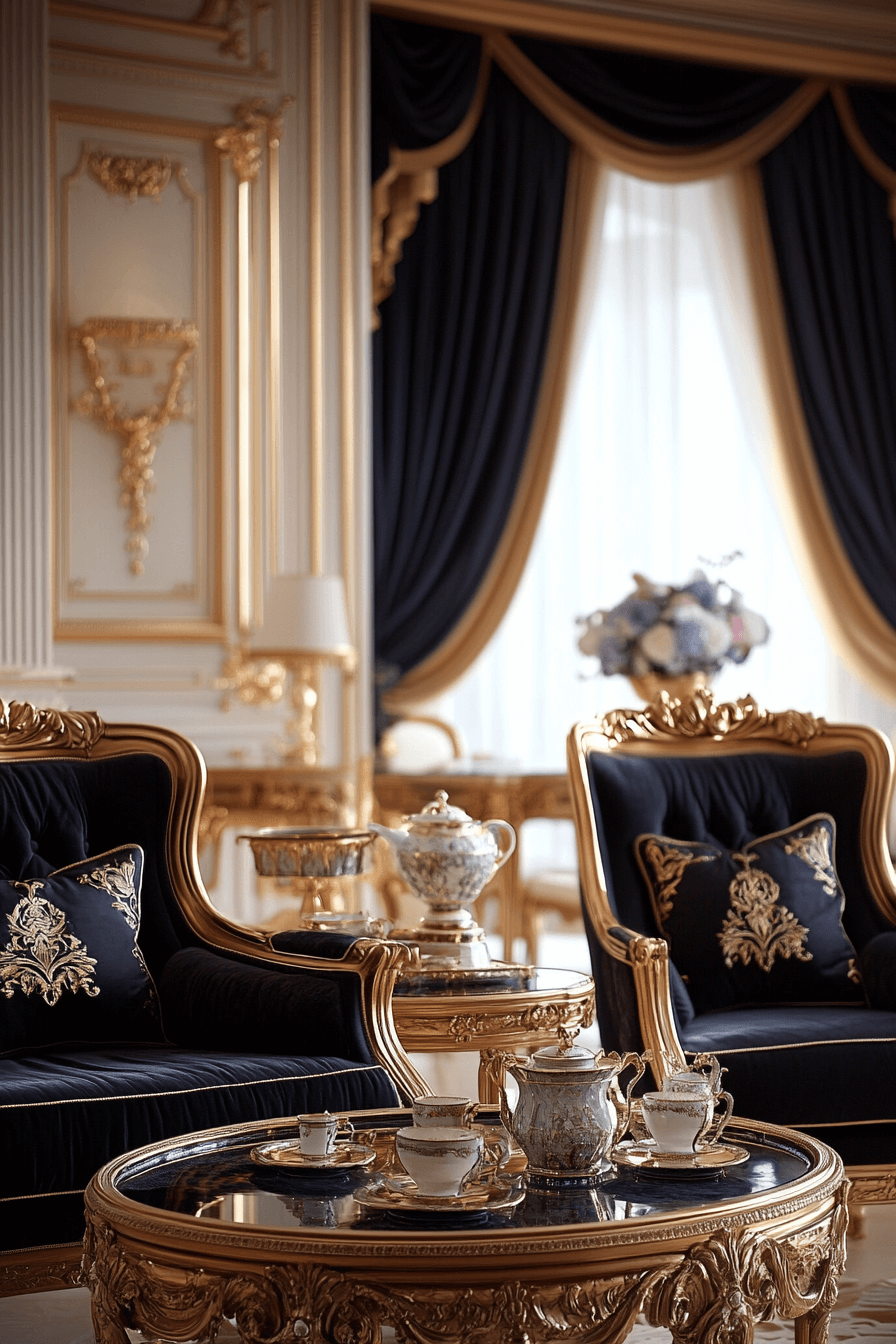
Palatial gold leaf detailing in neoclassical interior design introduces an element of grandeur and opulence. Applied to moldings, ceiling medallions, or furniture, gold leaf catches the light and adds a luxurious shimmer. This detailing is particularly effective in formal areas like living rooms or entryways, where it can make a bold statement. Coordinating with other gold-accented decor items creates a cohesive and richly decorated environment.
28. Traditional Pilaster-Adorned Walls
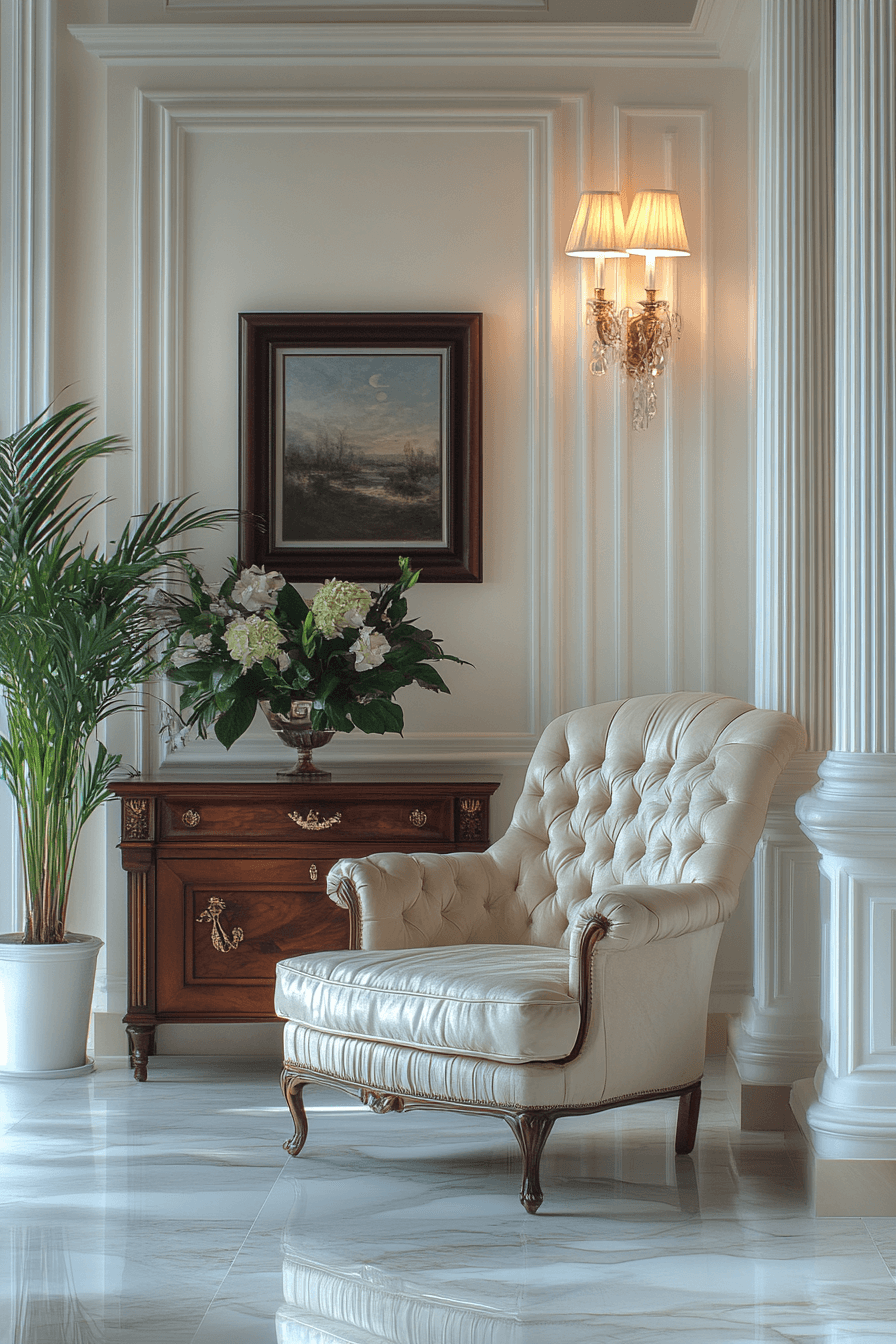
Traditional pilaster-adorned walls in neoclassical interior design add architectural interest and classical charm. These flat, rectangular columns frame doorways or segment walls, enhancing the structural elegance of the space. Often capped with ornate capitals, pilasters mimic the grandeur of full columns but with less spatial intrusion. They can be painted or finished to match or contrast with the wall color, accentuating their decorative purpose.
29. Sumptuous Brocade Fabric Lounges
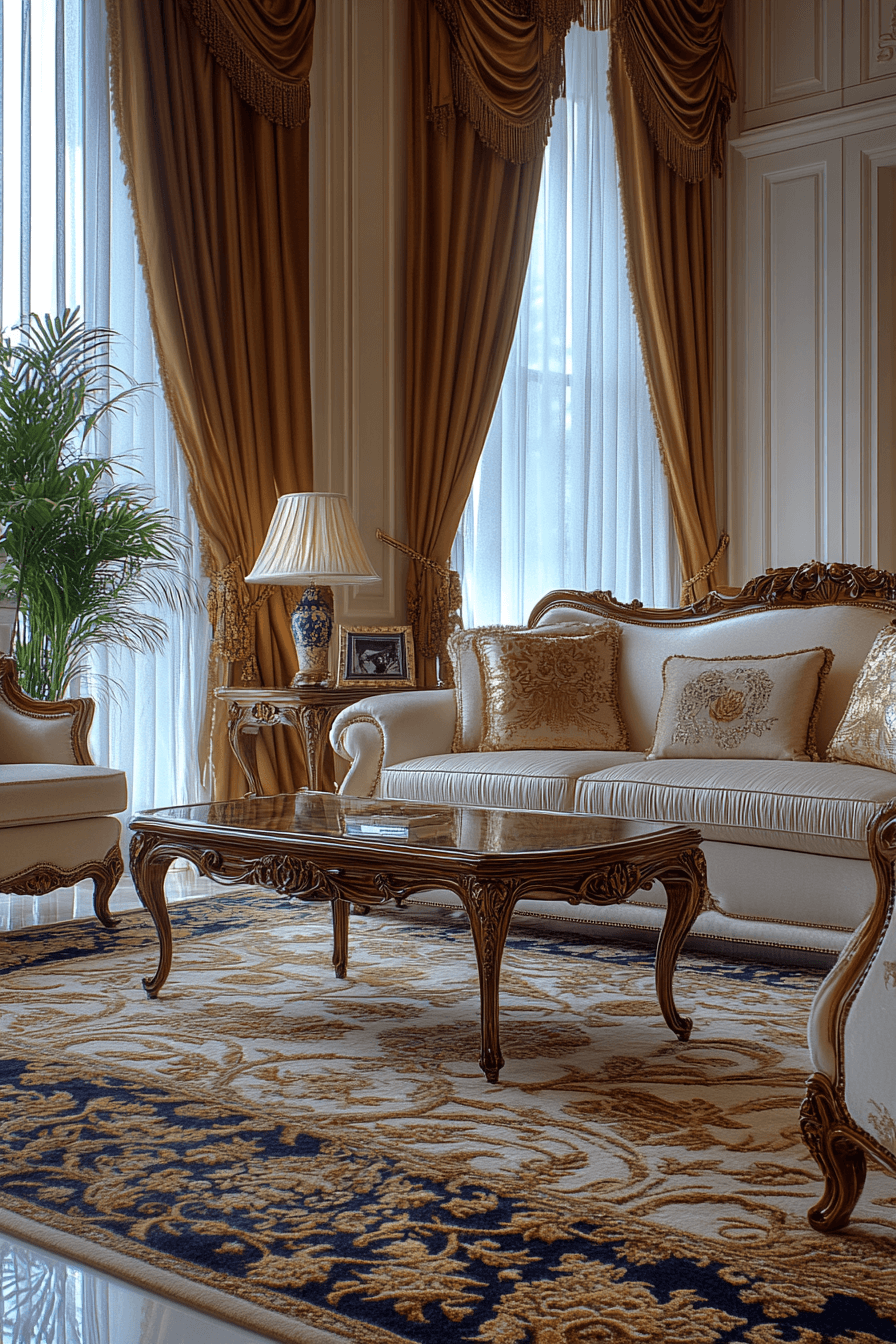
Sumptuous brocade fabric lounges in neoclassical interior design create luxurious and inviting seating areas. The rich patterns and textures of brocade fabric add depth and interest to sofas and chairs, making them not only comfortable but also visually stunning. These fabrics can be coordinated with drapes and cushions to unify the room’s decor, enhancing the overall elegance. Accents like gilded side tables or classical statuettes complement the fabric’s opulence, completing the lavish look.
In conclusion, these 29 neoclassical interior ideas offer the perfect way to transform your room with timeless historical charm. By incorporating classic architectural details, elegant furniture, and rich textures, you can create a space that feels both luxurious and sophisticated. Whether you’re aiming for a full neoclassical design or subtle touches, these ideas will help you elevate your space with a sense of grandeur and refinement. Embrace these neoclassical interior ideas to bring history into your home while adding elegance and style that never goes out of fashion.

